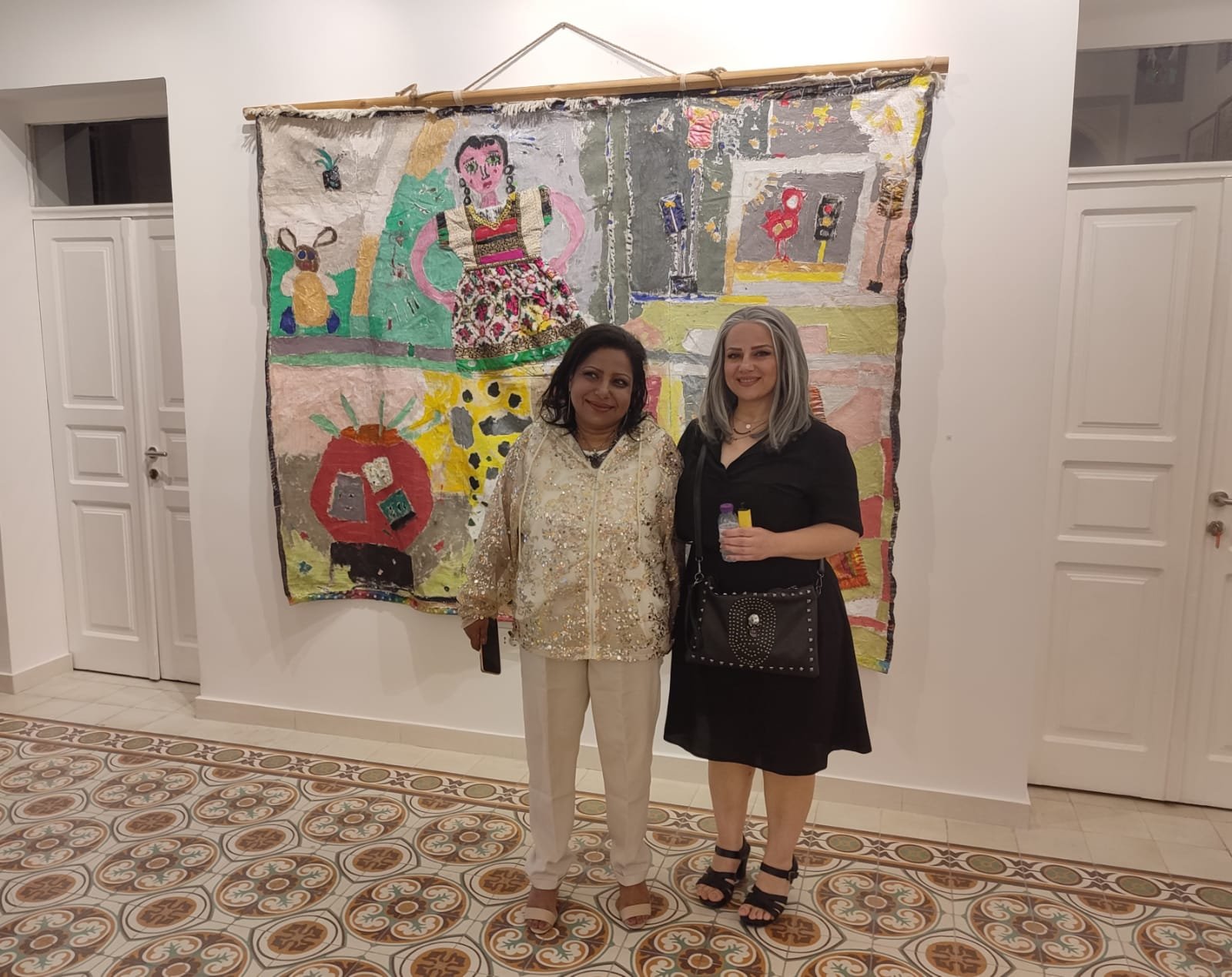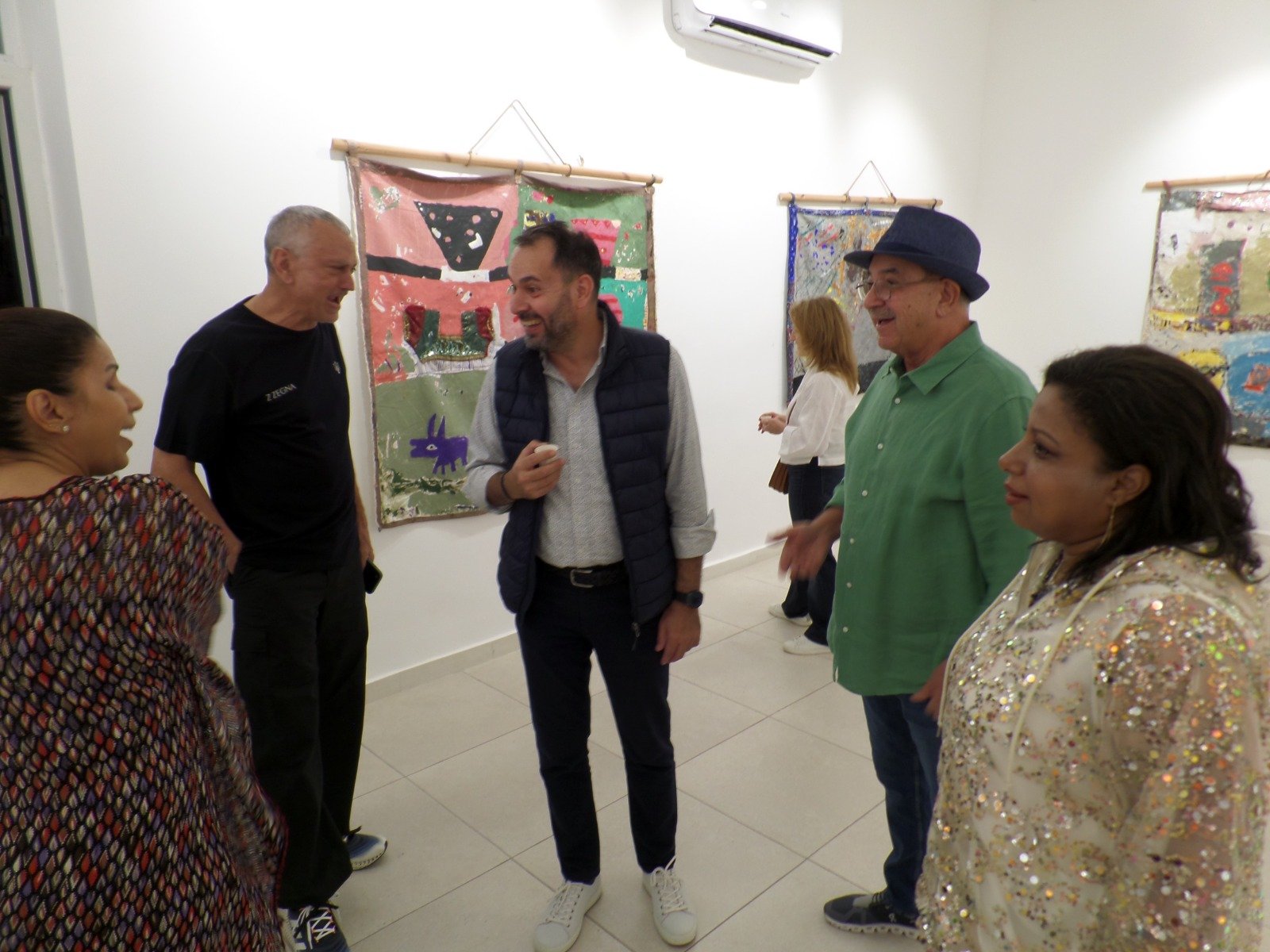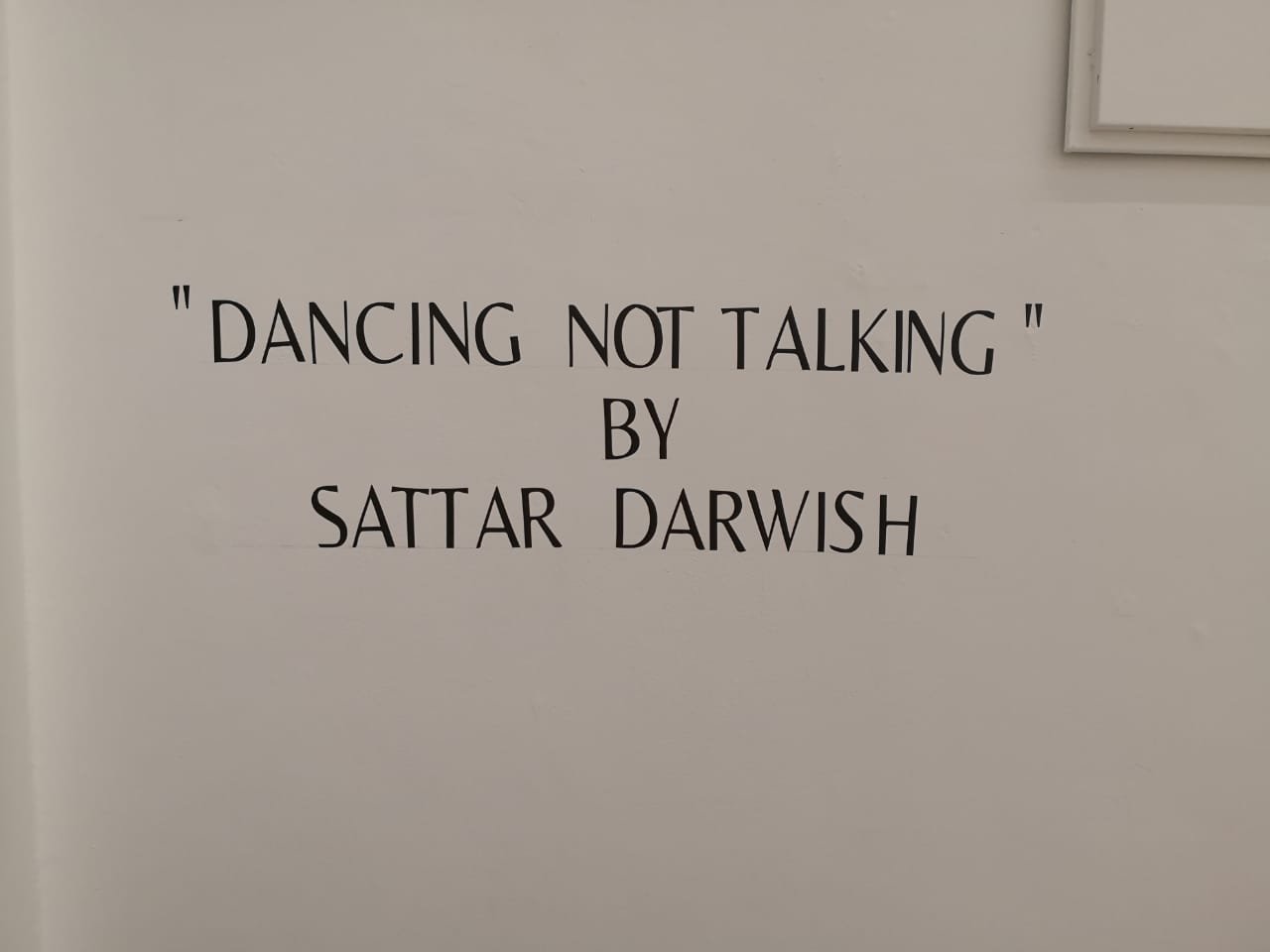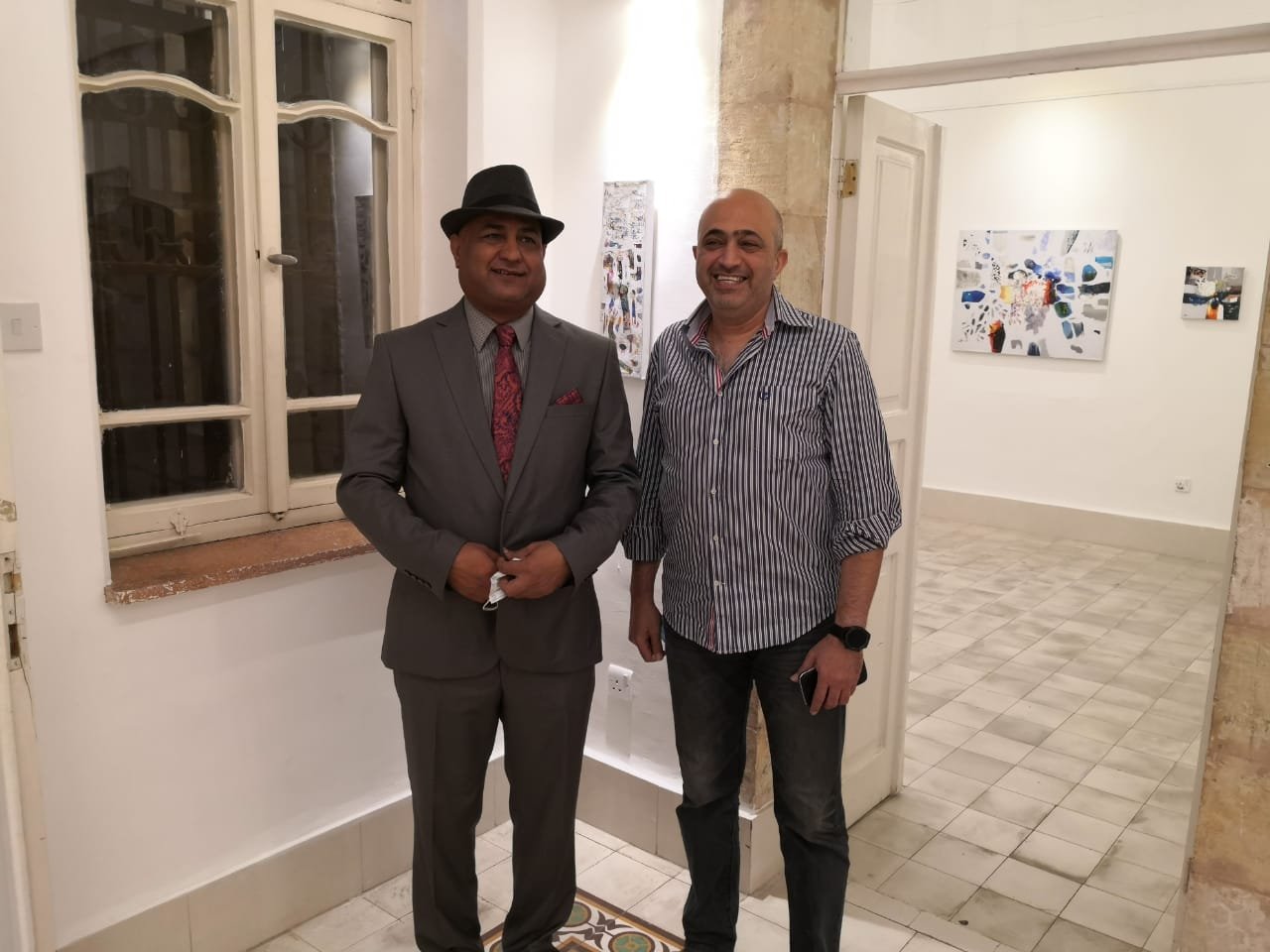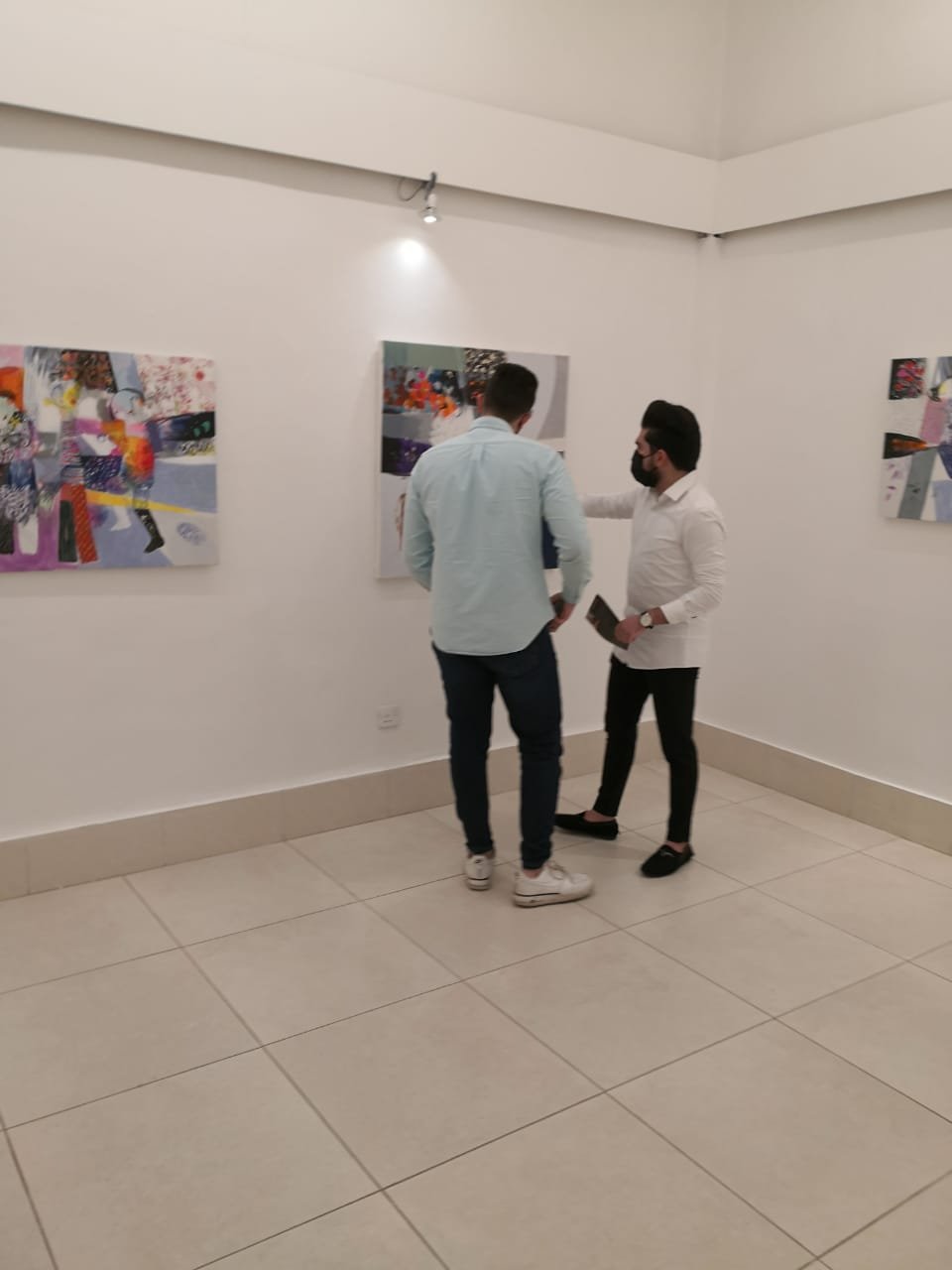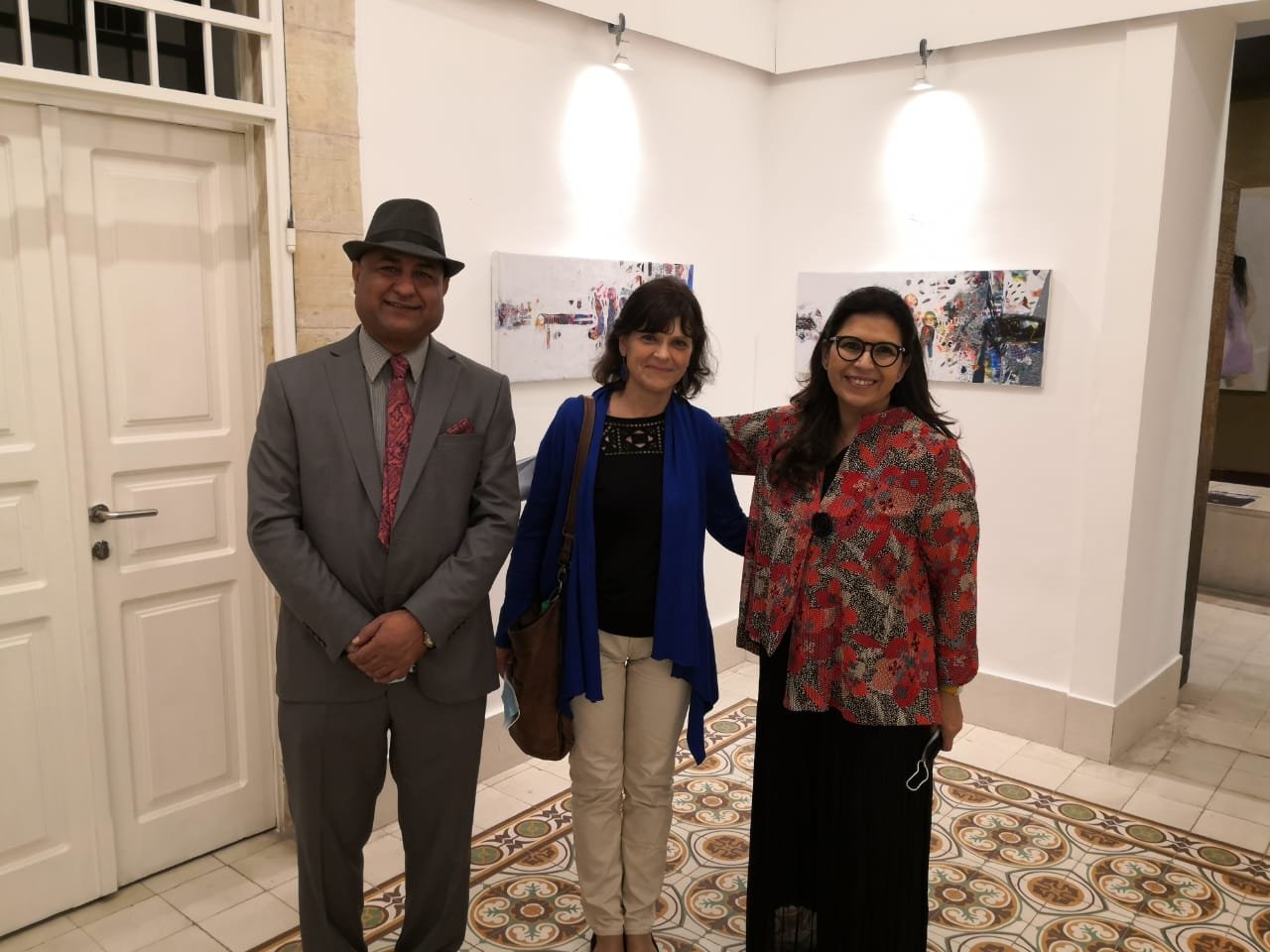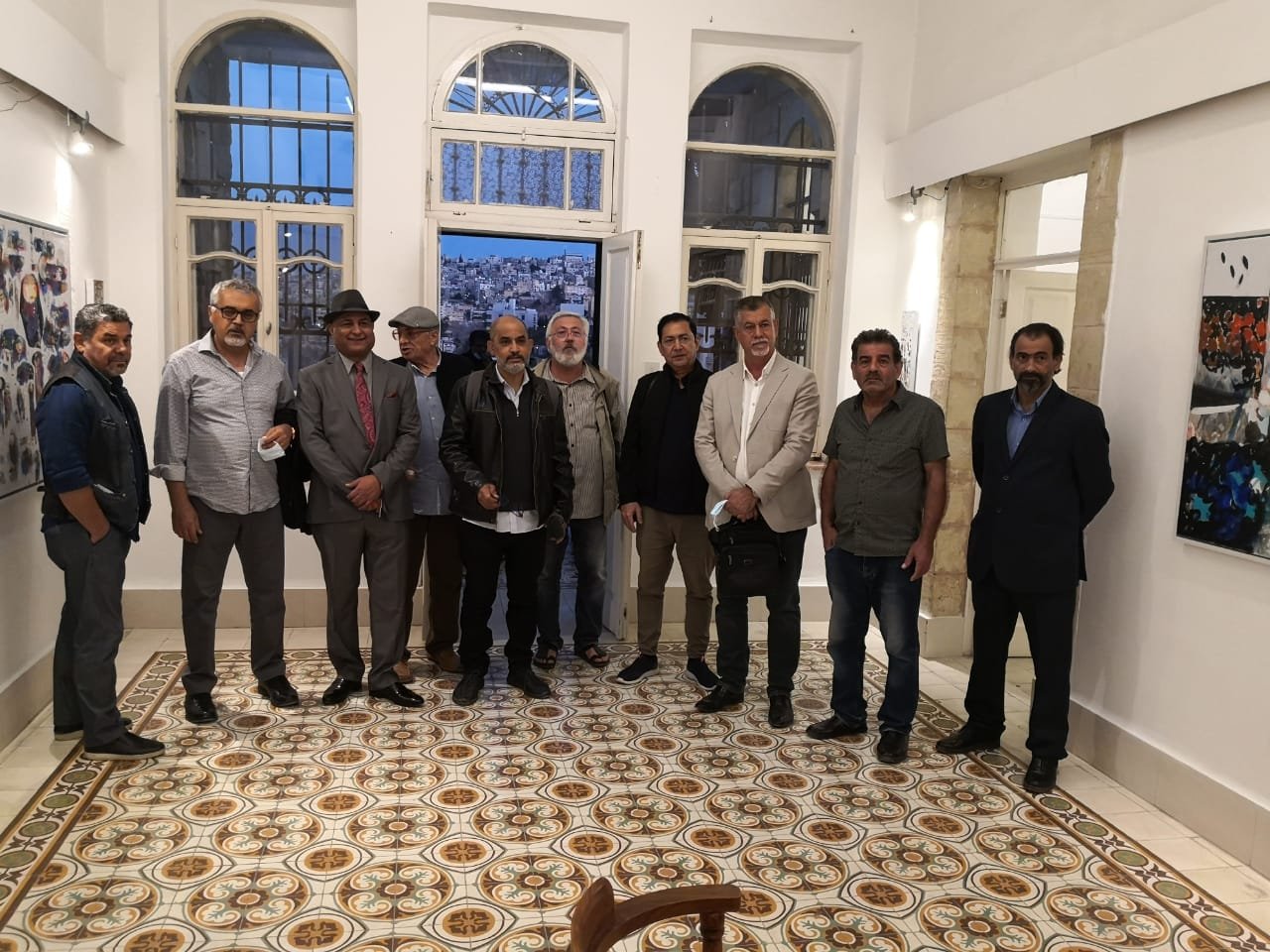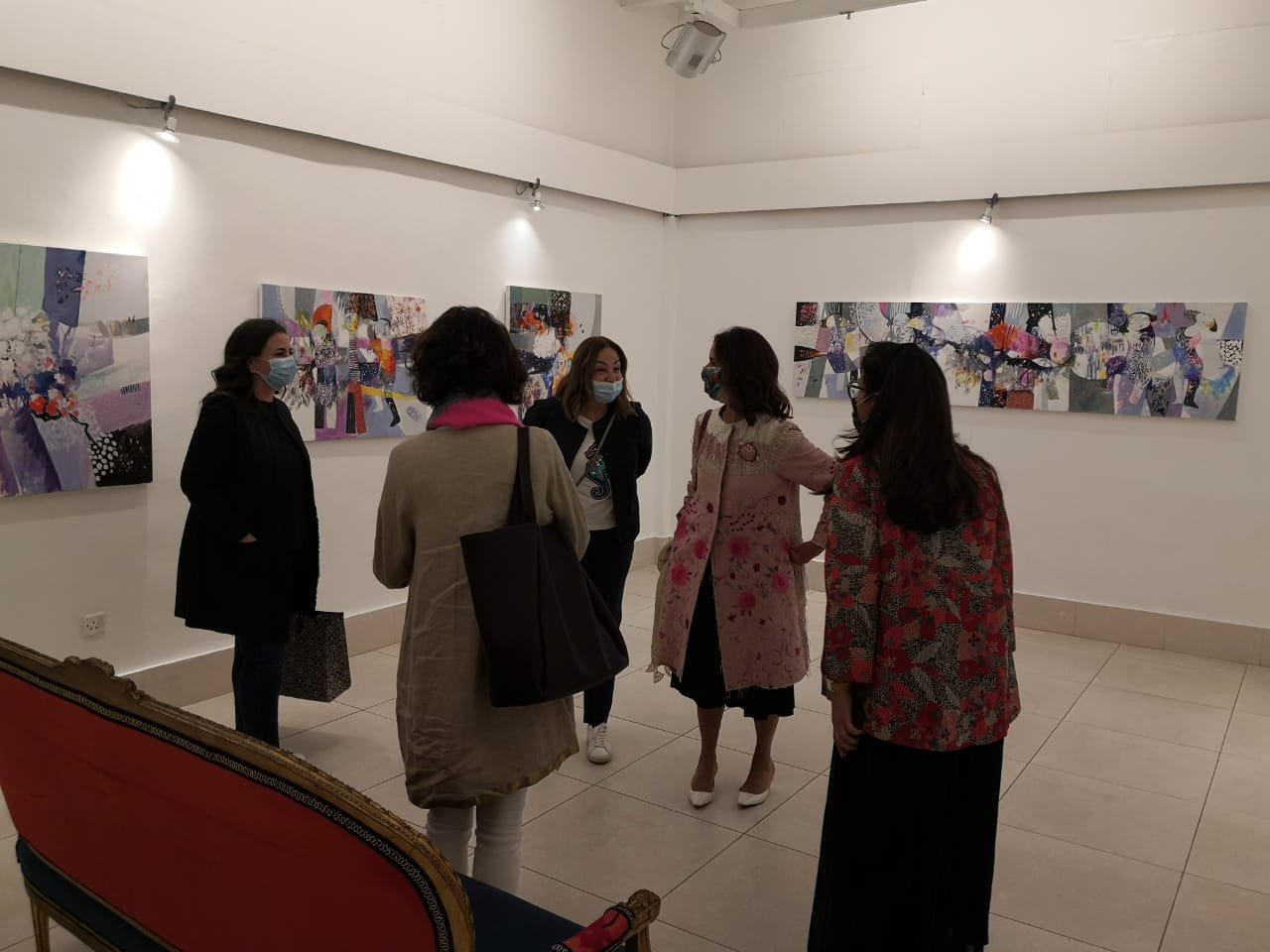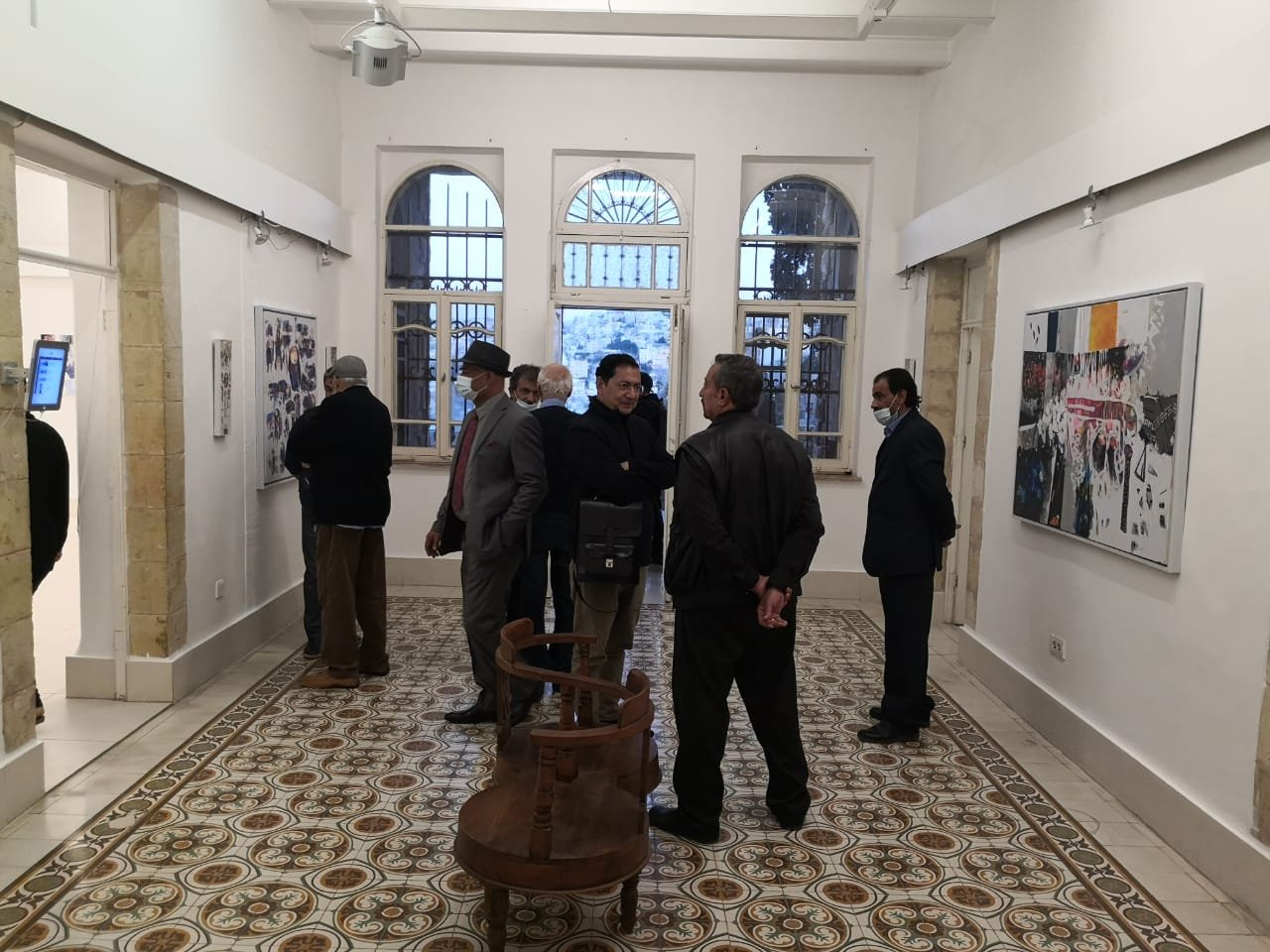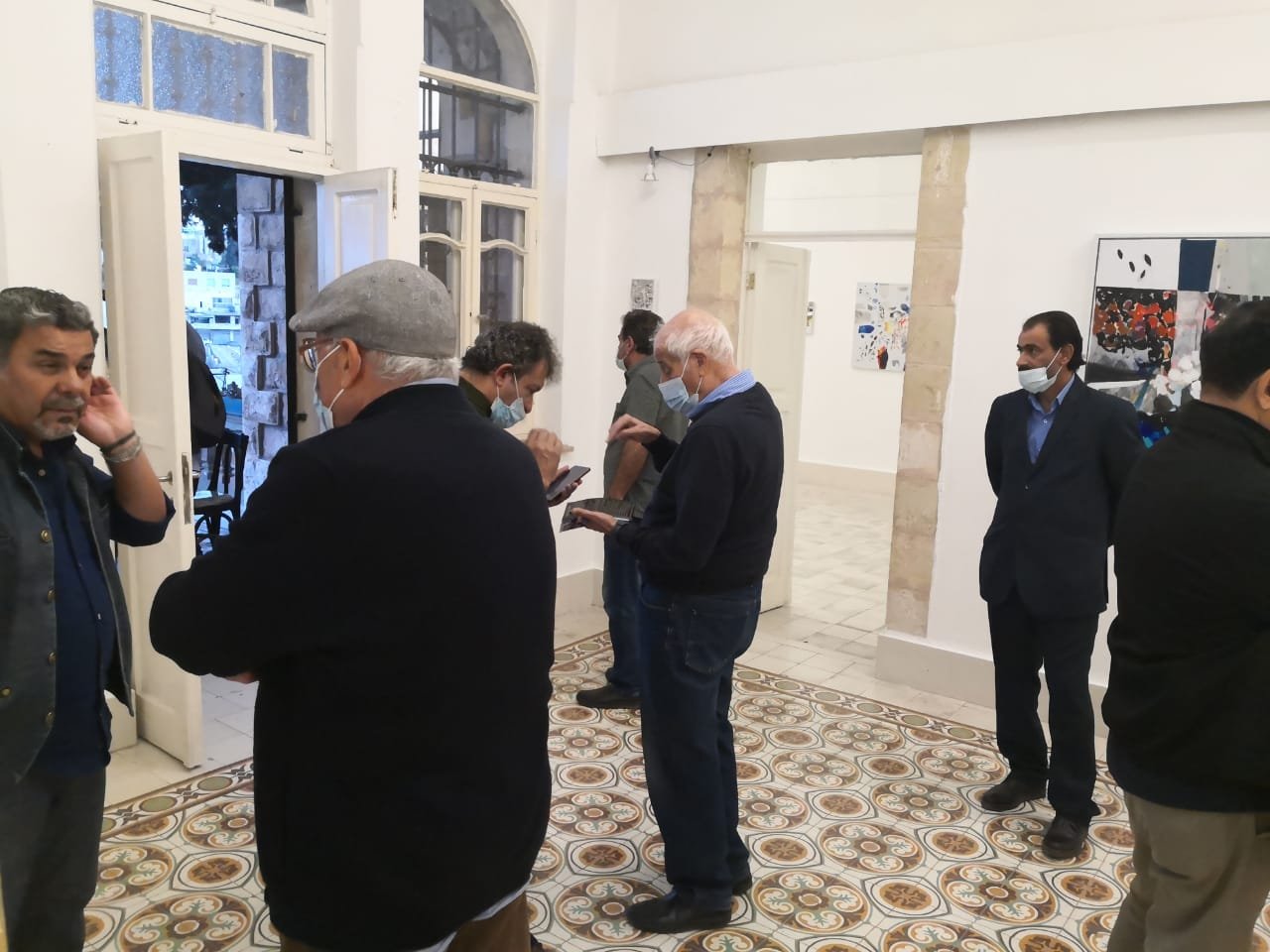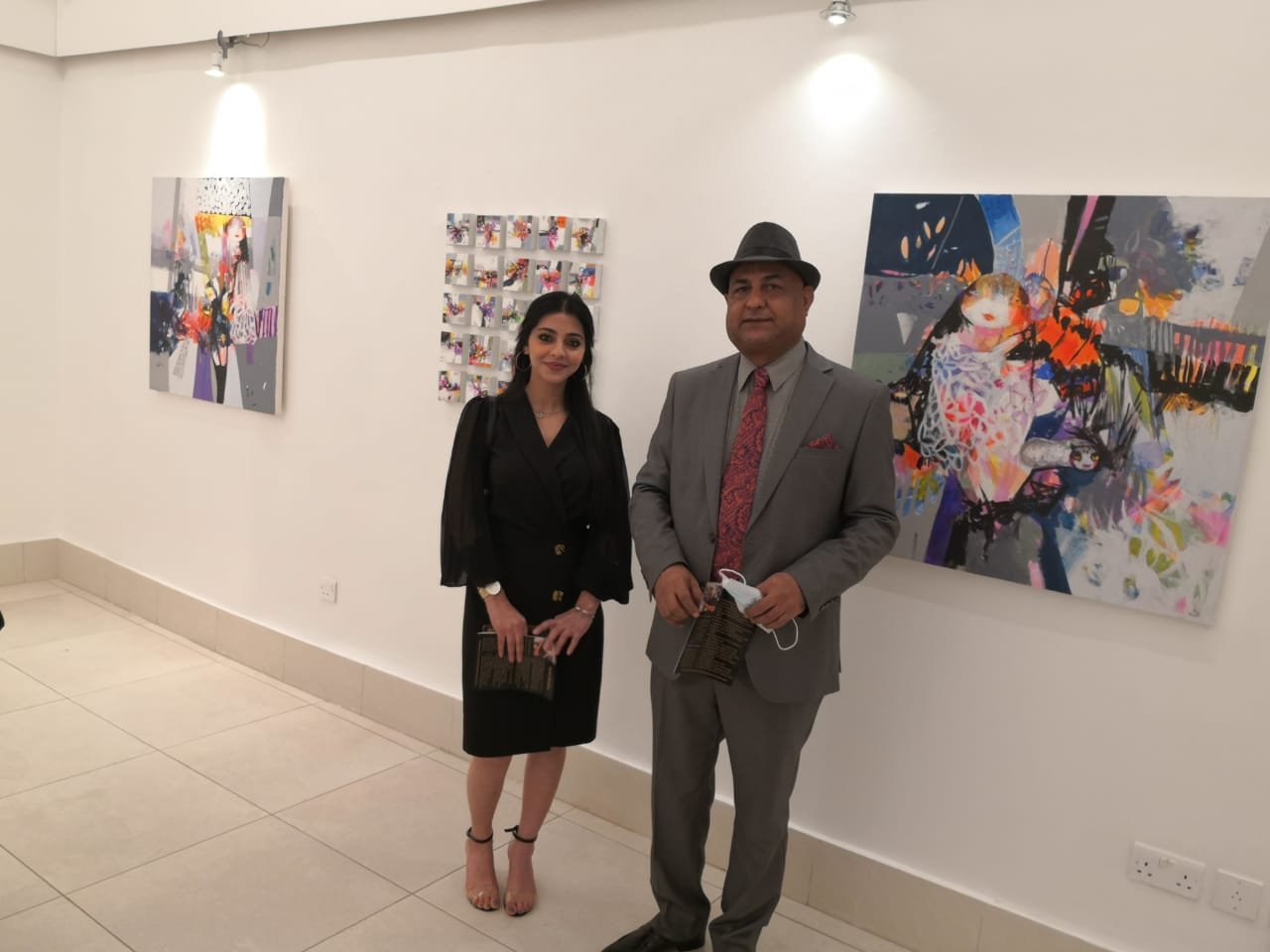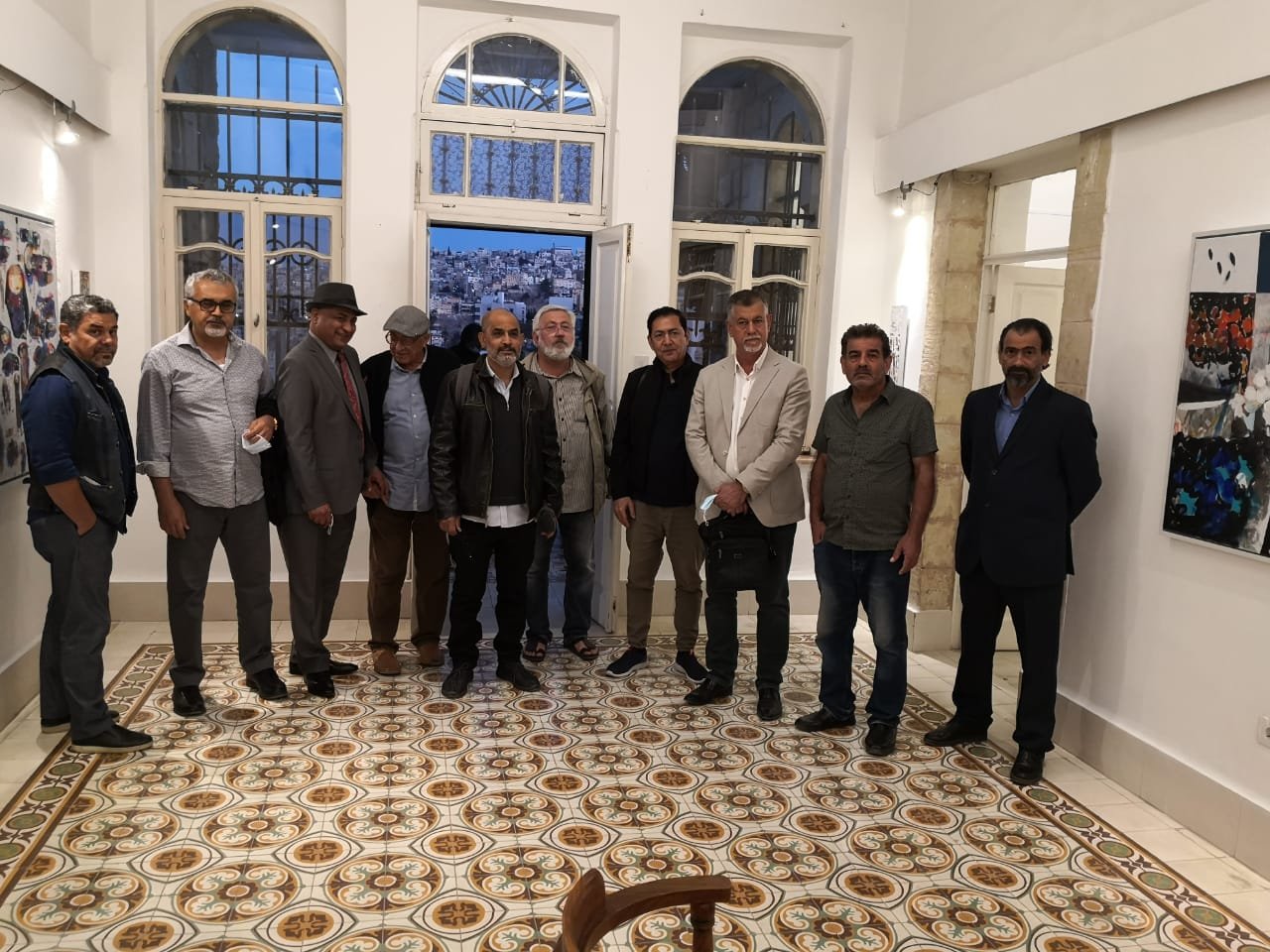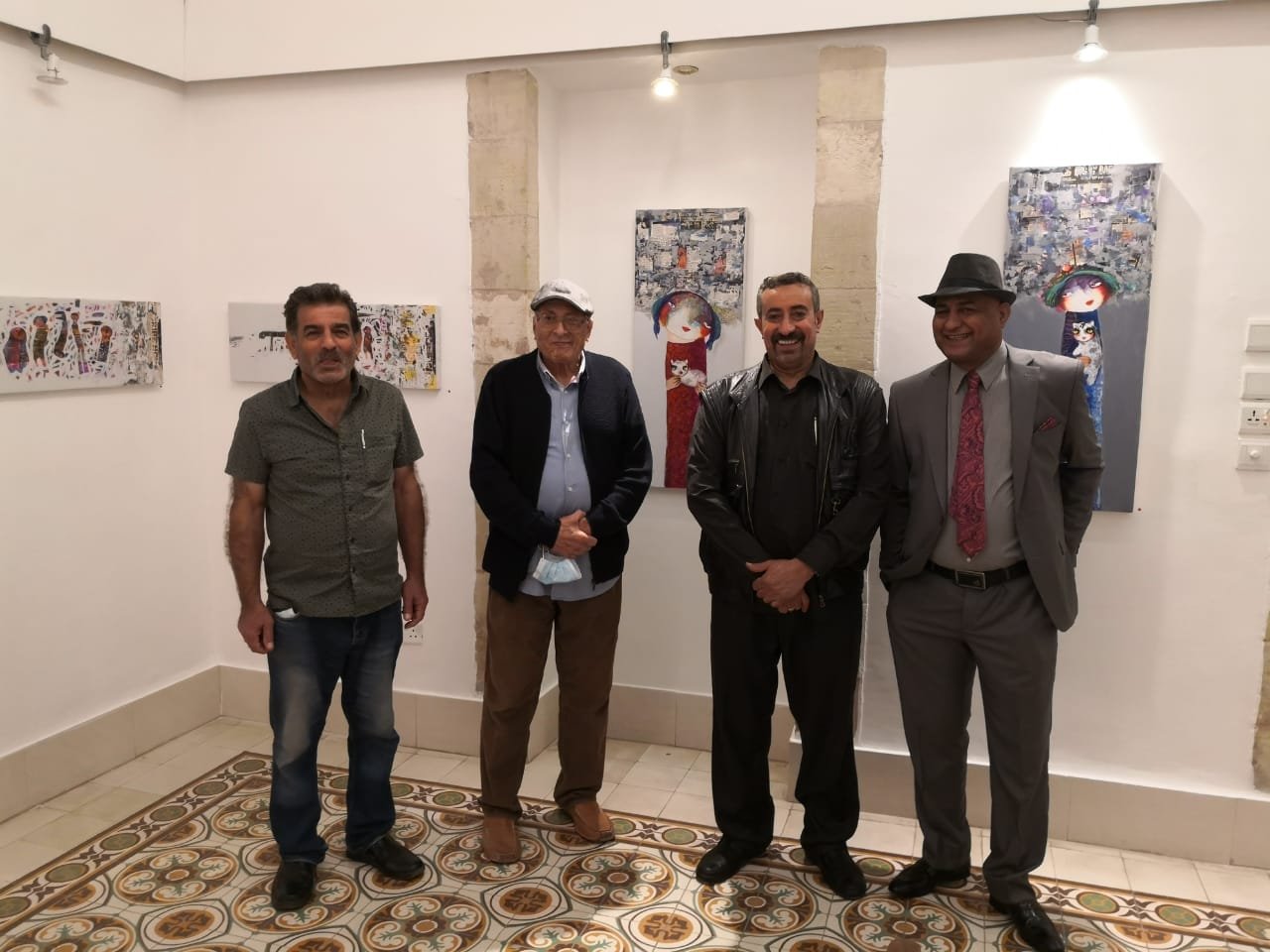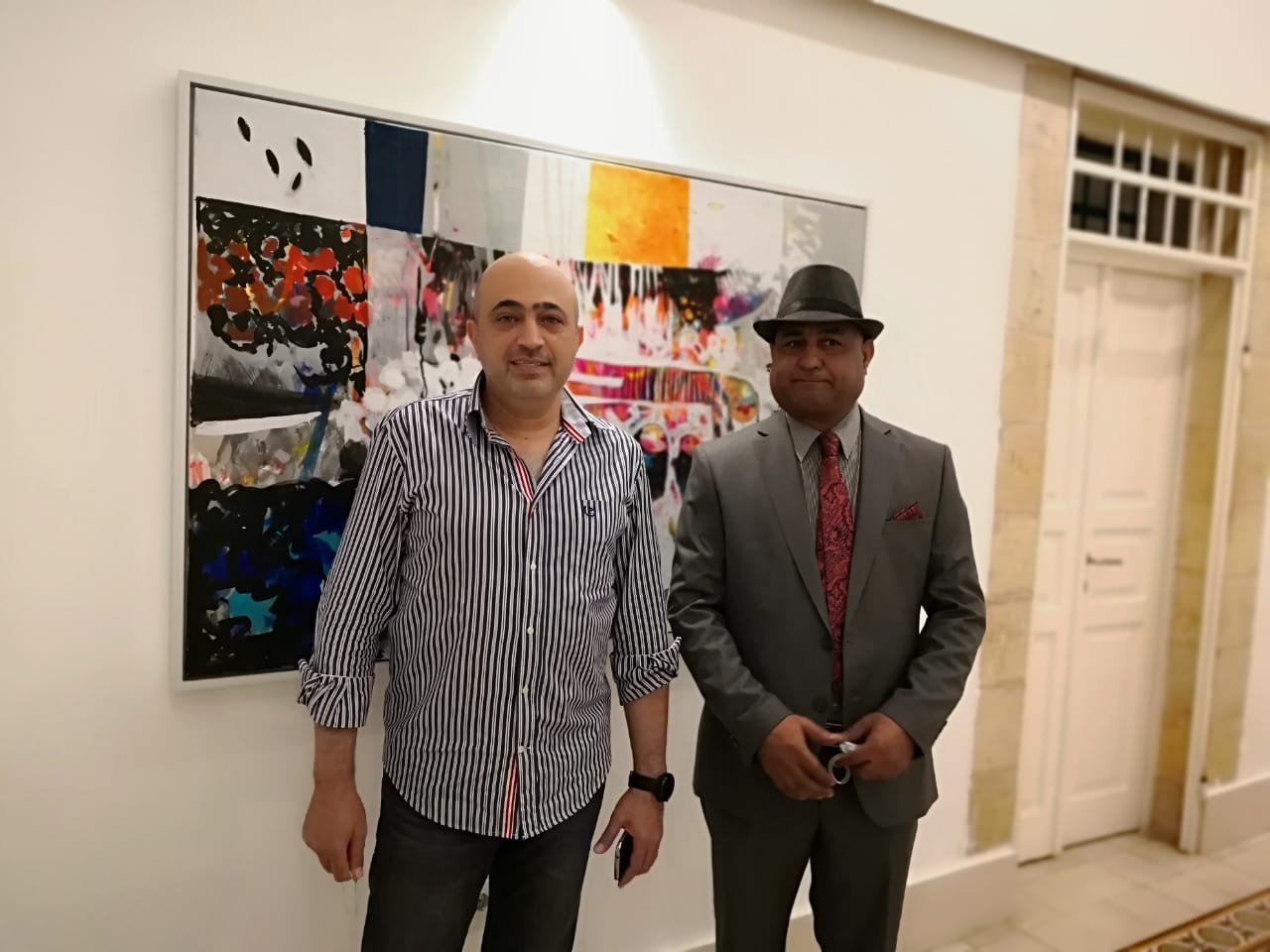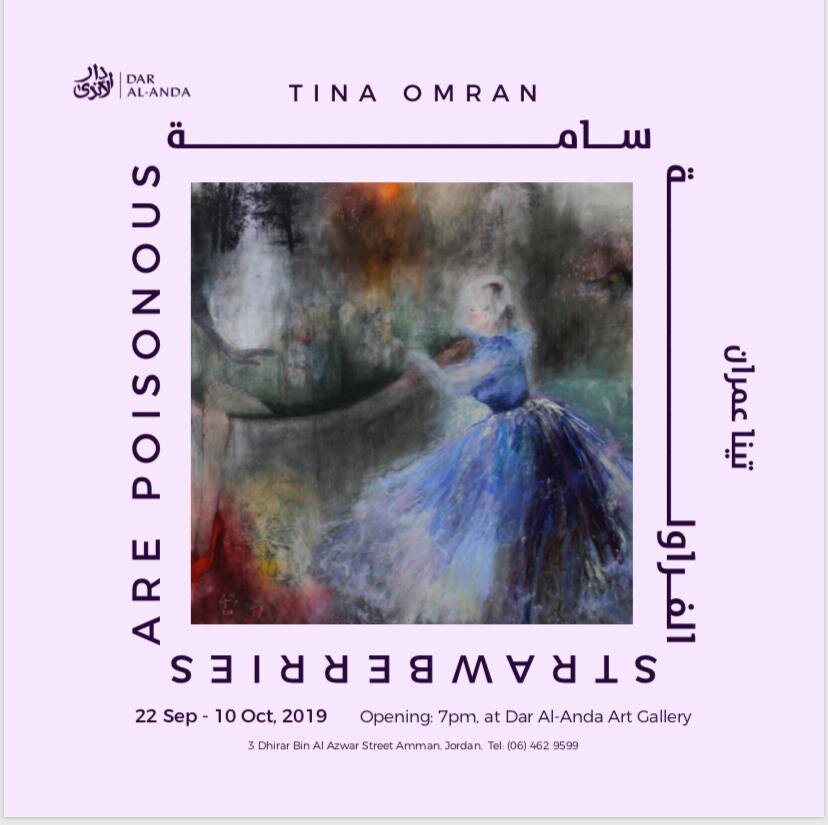
Exhibitions & Events
Dar Al-Anda has had the honor of hosting over 200 exhibitions over the course of 25 years and counting.
Exhibitions are usually scheduled 12 months out, but we’re continuously adding new exhibitions and special events to the calendar.
Join our mailing list to be the first to learn about new exhibitions as we schedule them.
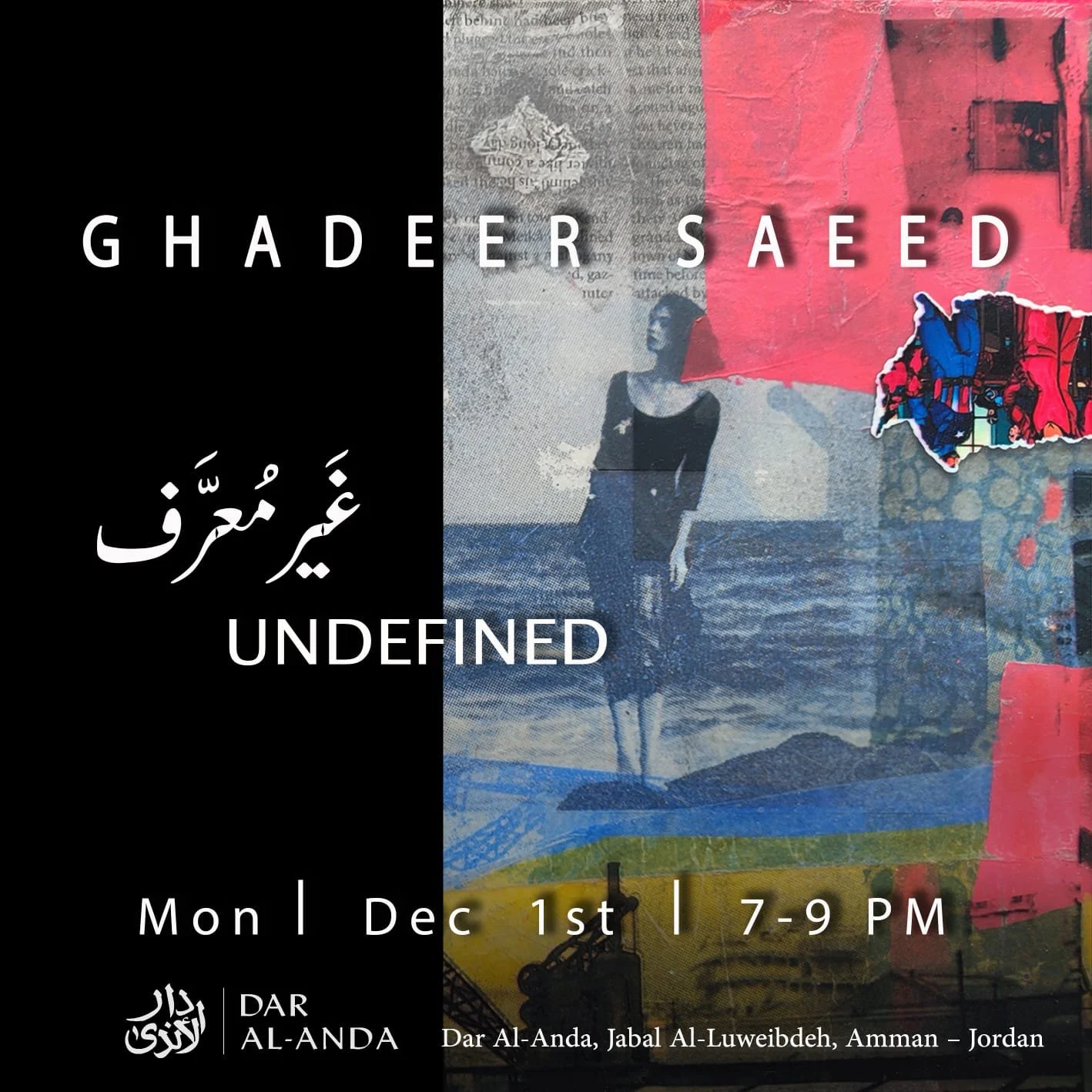
“UNDEFINED” By Ghadeer Saeed (Solo Exhibition)
Returning for her second solo show at Dar Al-Anda, Jordanian-Palestinian artist Ghadeer Saeed traces human disorientation in an era where technology overwhelms humanity in this captivating new series.
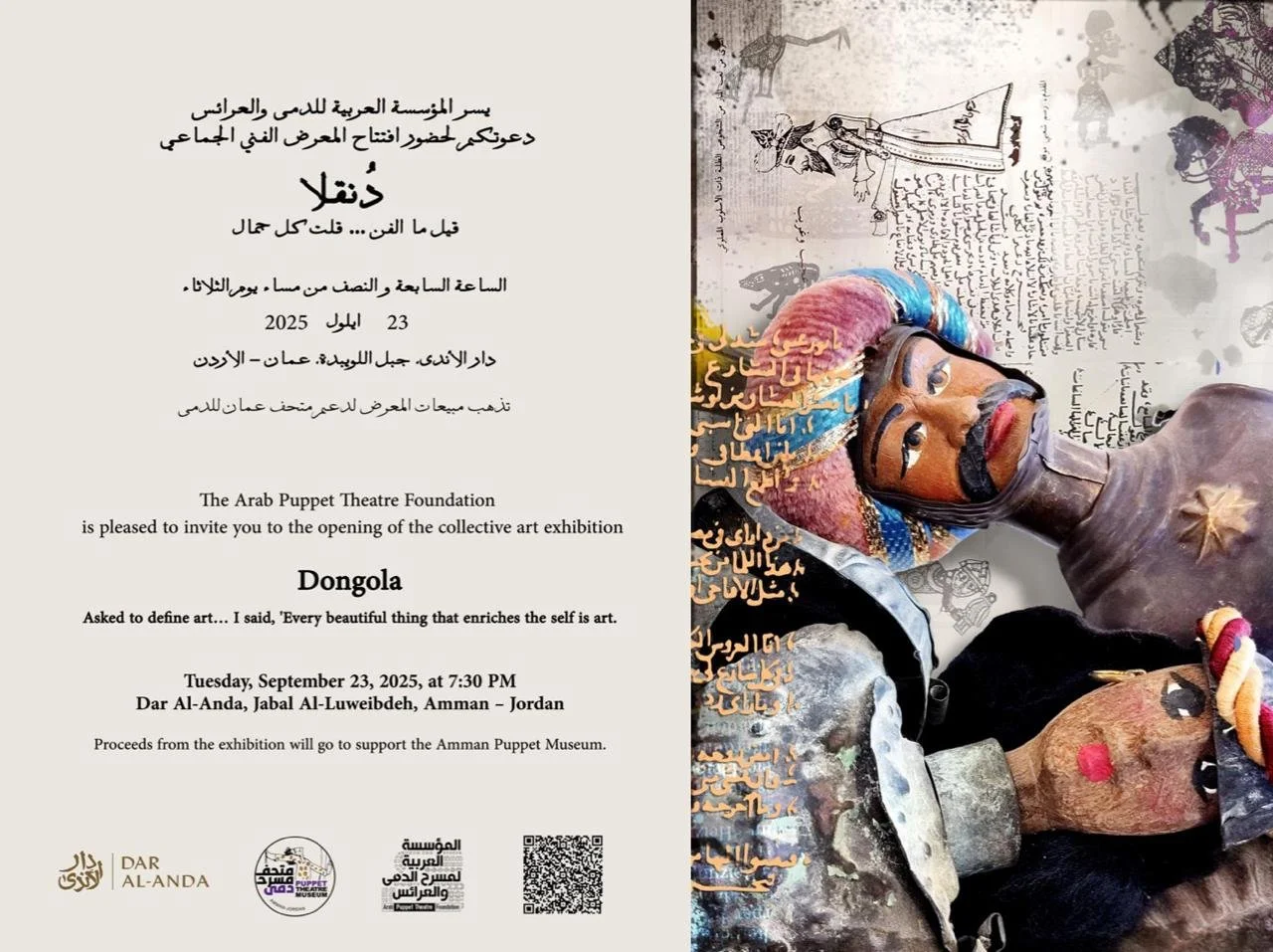

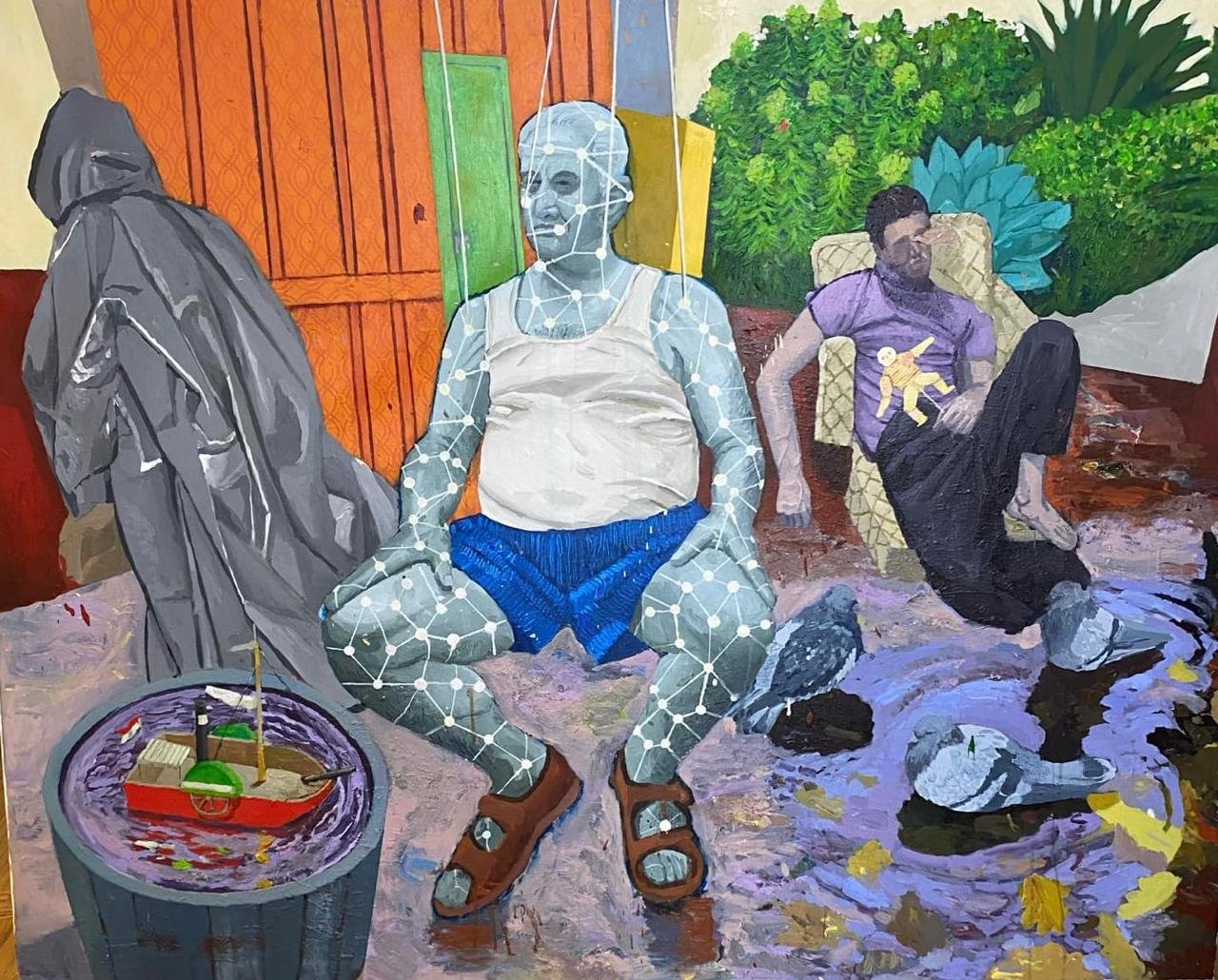
Dar Al-Anda at Art Cairo 2025
Dar Al-Anda Art Gallery is excited to announce its participation in Art Cairo 2025, marking our first international art fair engagement in nearly a decade. Taking place from February 7-11, 2025, at the stunning Grand Egyptian Museum, this sixth edition of Egypt's leading art fair will witness us feature a diverse array of talent from the region, showcasing the expressive works of artists such as Ghadeer Saeed, Syrian artist Mohamad Omran, alongside Iraqi talents Saddam Jumaily, Amar Dawod, and Qais Eesa. Join us as we celebrate contemporary Arab art and foster connections within the international art community.
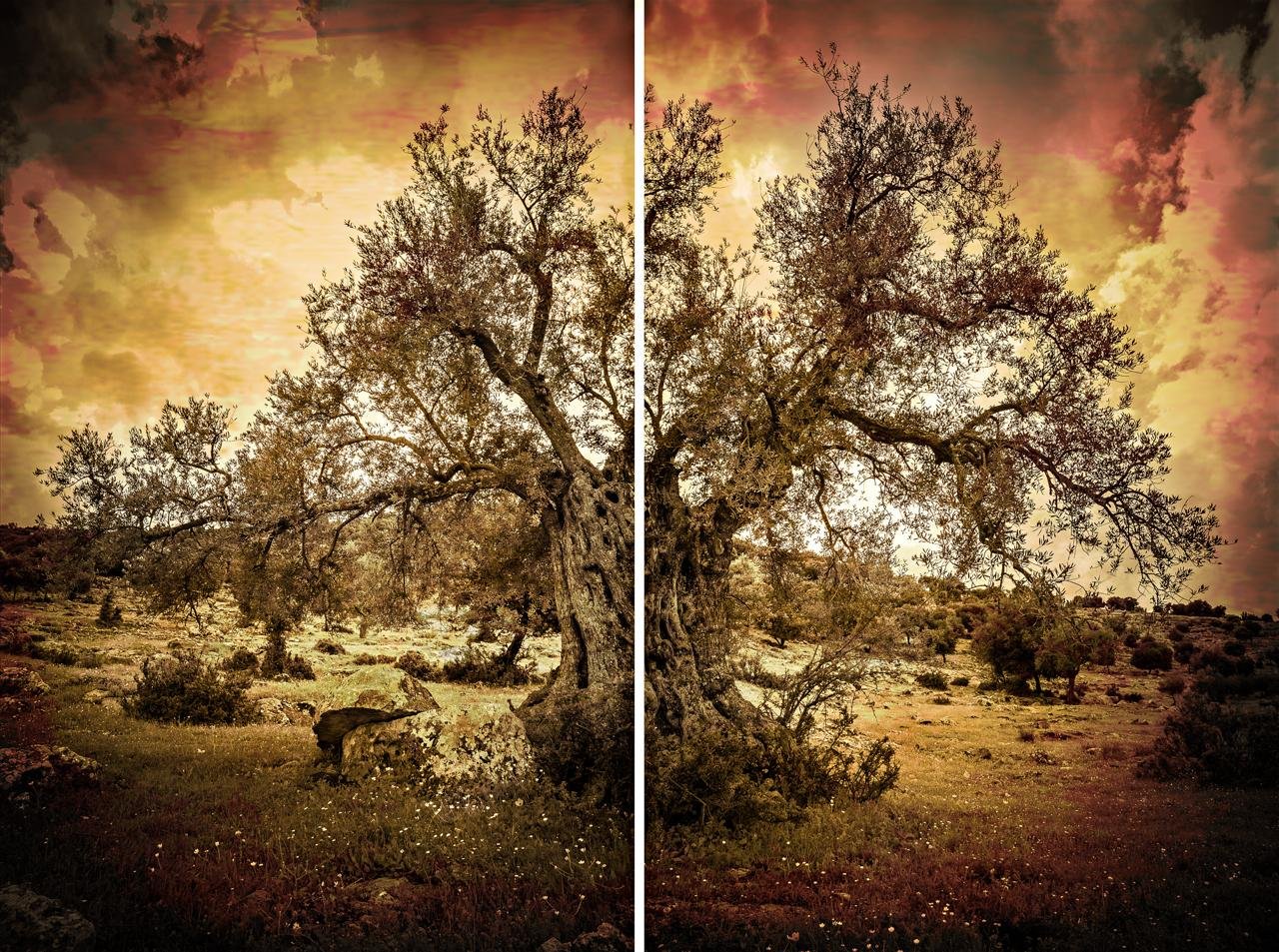
Zeitoun by Tariq Dajani
In his latest exhibition, Tariq Dajani invites us to consider our relationship with the millennial Rumi olive trees. With their gnarled and twisted trunks, these ancient trees stand silently, steadfastly, sa'midoun, like ancient sentinels, keepers of memory, observers of time long gone. Dajani asks, "If these trees could speak, what might they say?"
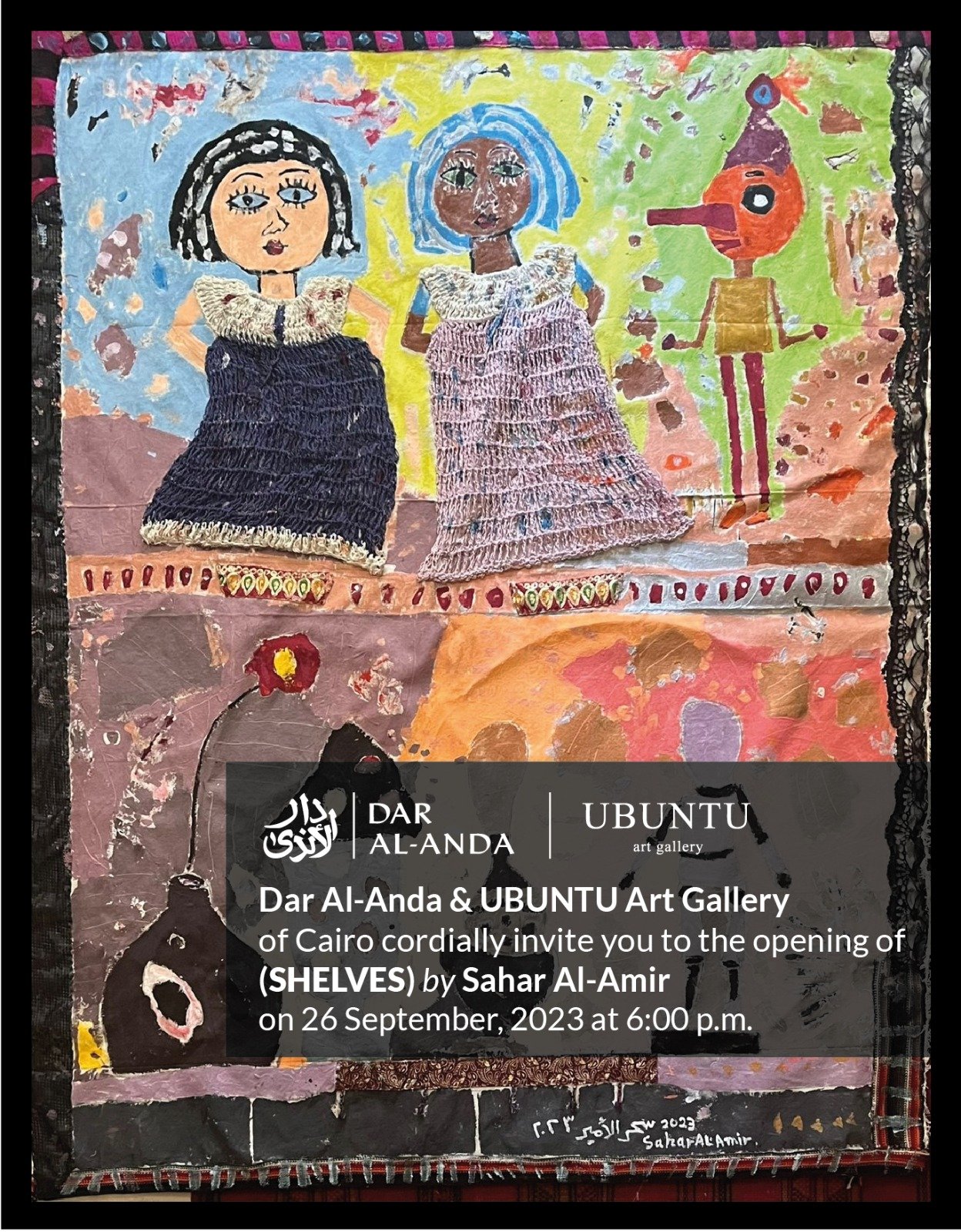
(SHELVES) by Sahar Al-Amir (Co-Presented with Ubuntu Art Gallery of Zamalek, Cairo)
(Shelves): An Exhibition by Sahar Al-Amir
Shelves, those humble pieces of furniture found in every home, can serve as deep repositories of memories and meanings. Besides their utilitarian function, shelves often carry a philosophical dimension that goes unnoticed by many. In this contemplation, we delve into the philosophical depth of shelves and explore their role as vessels of memories.
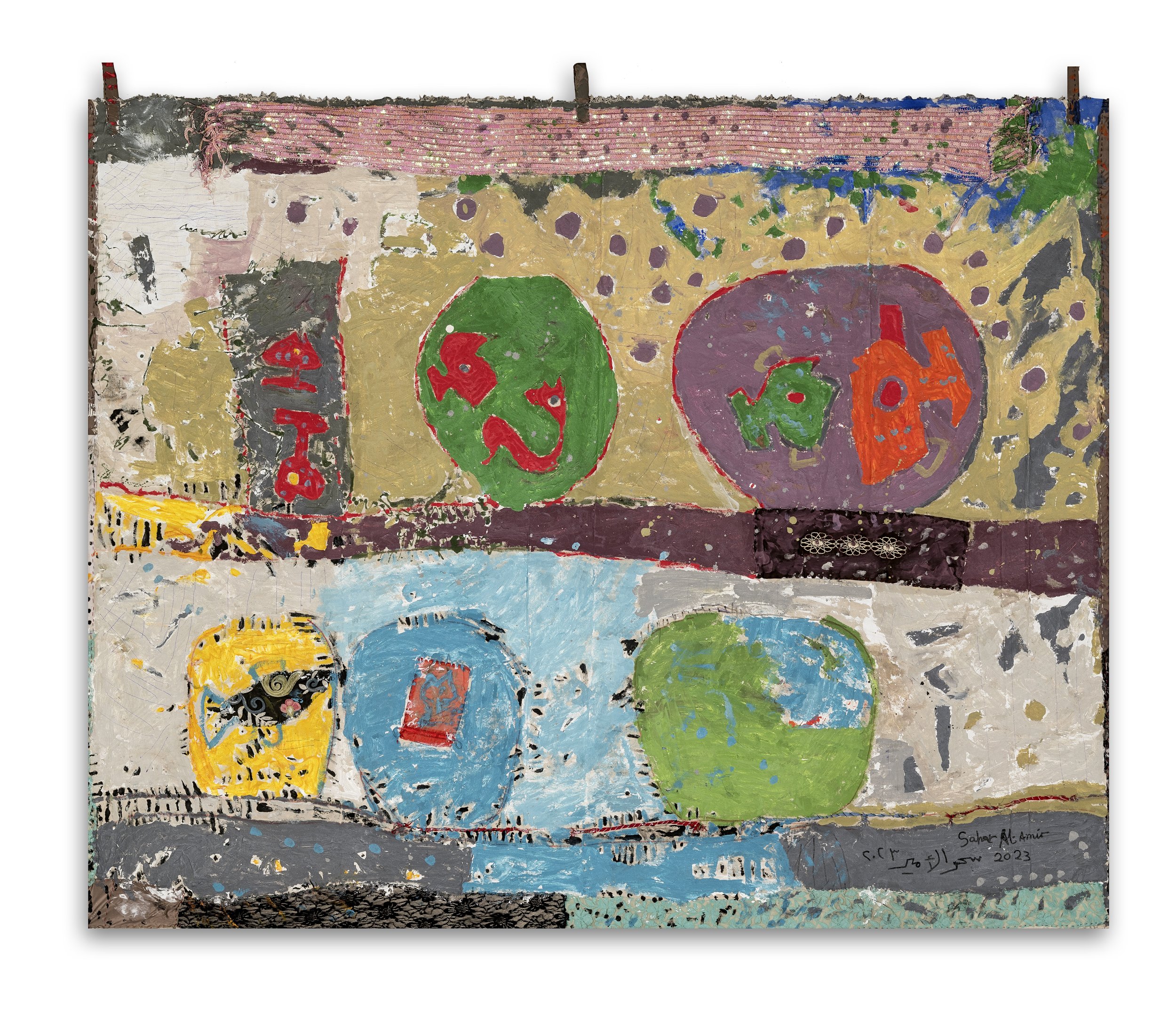
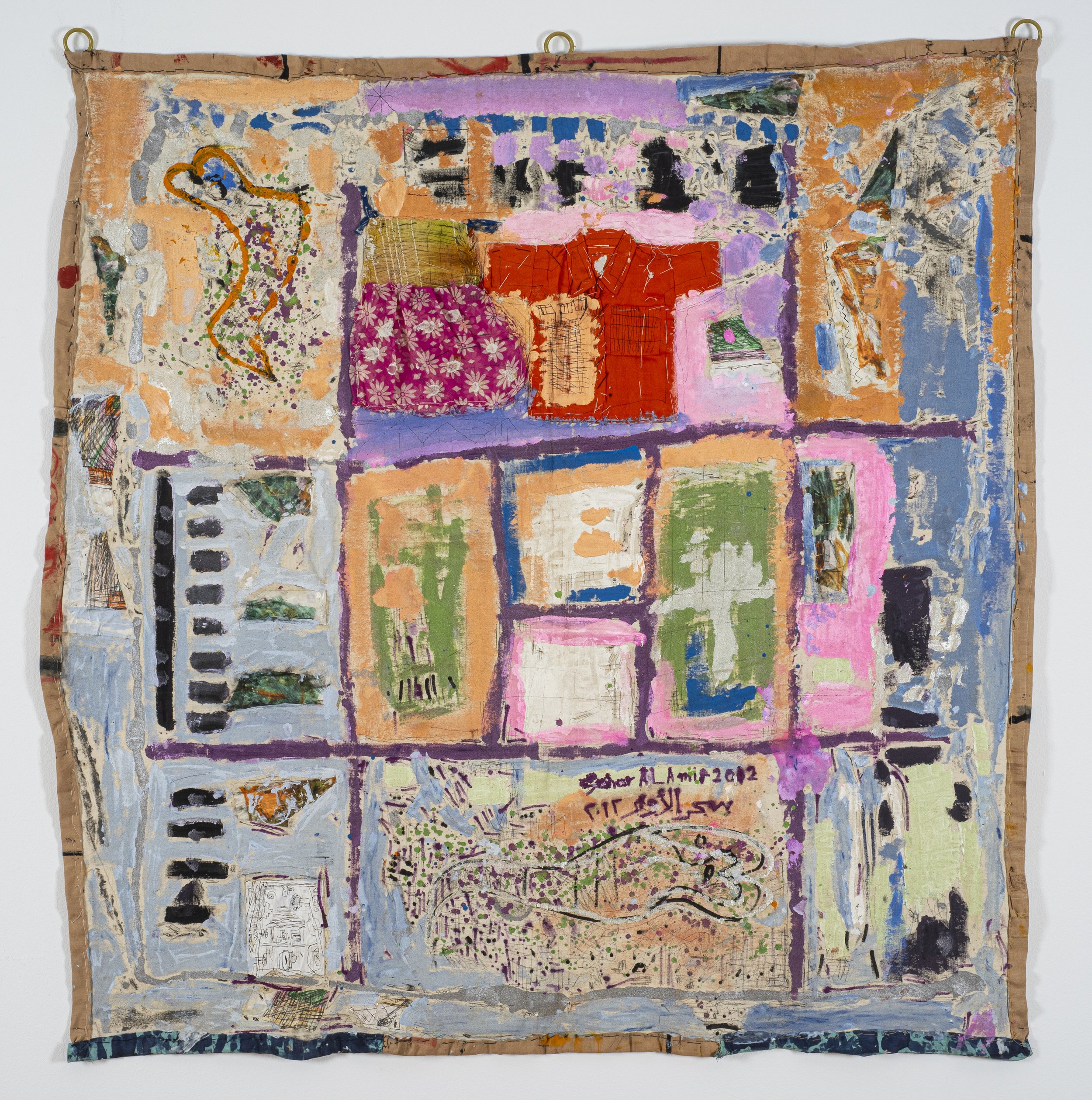
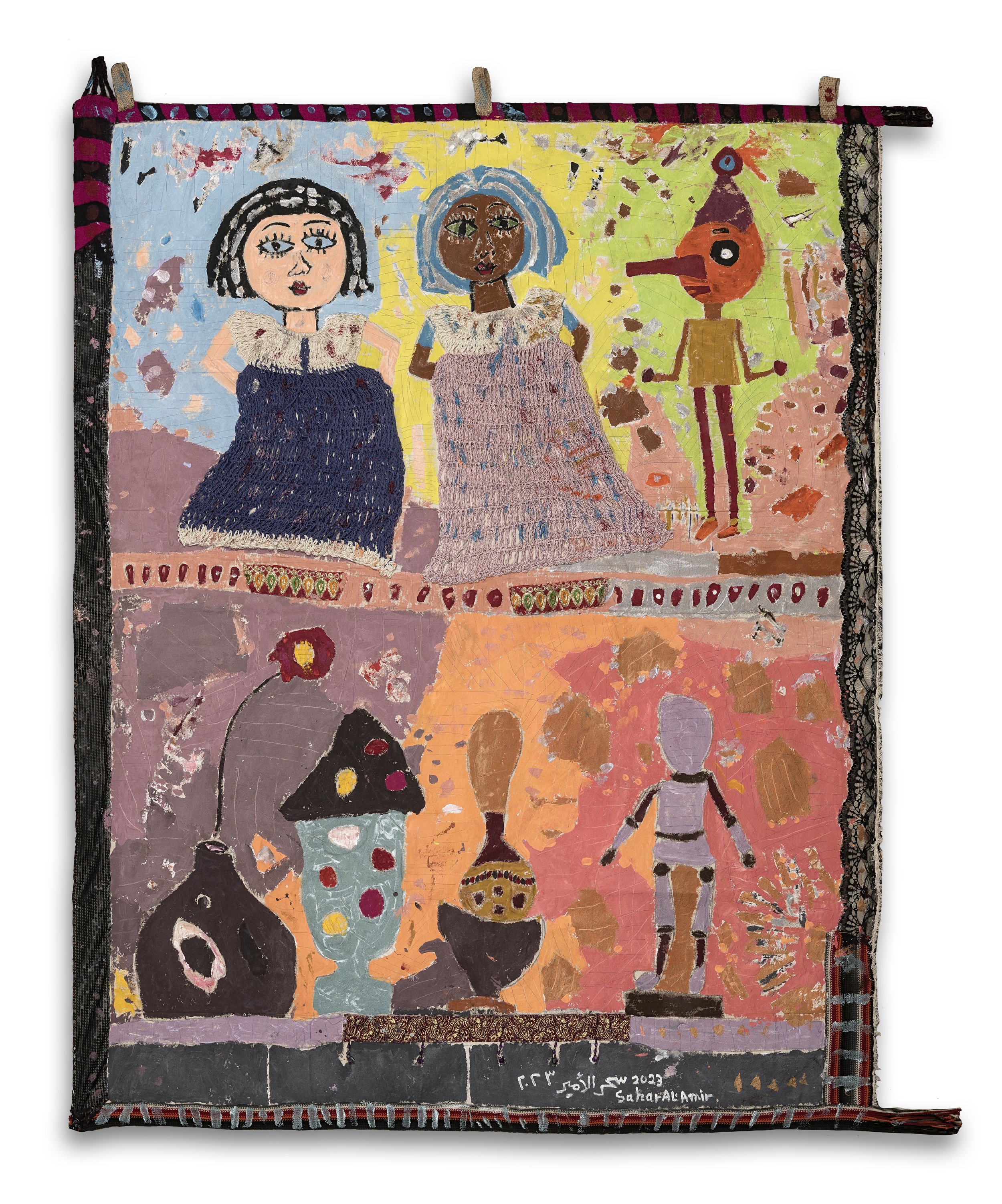
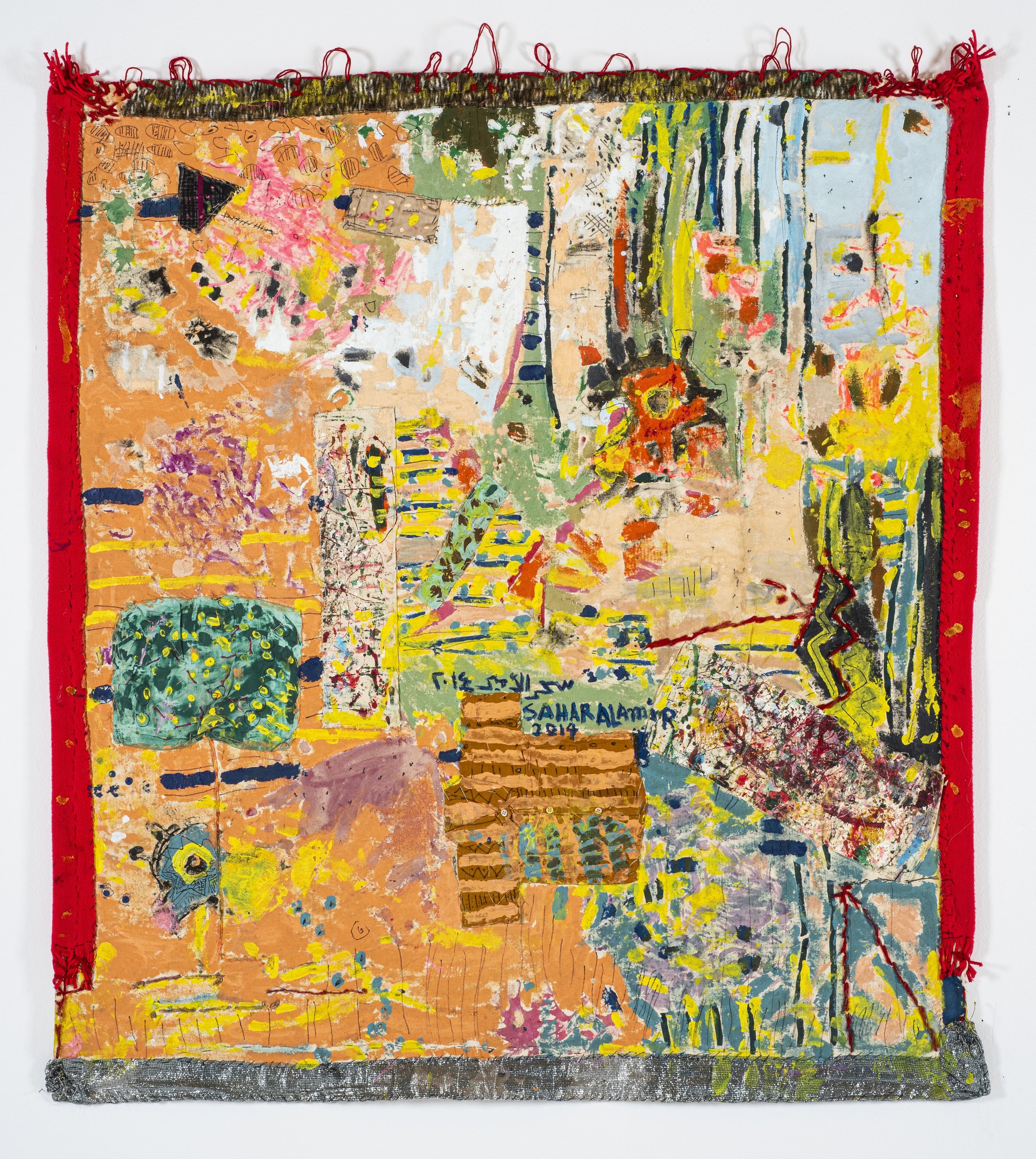
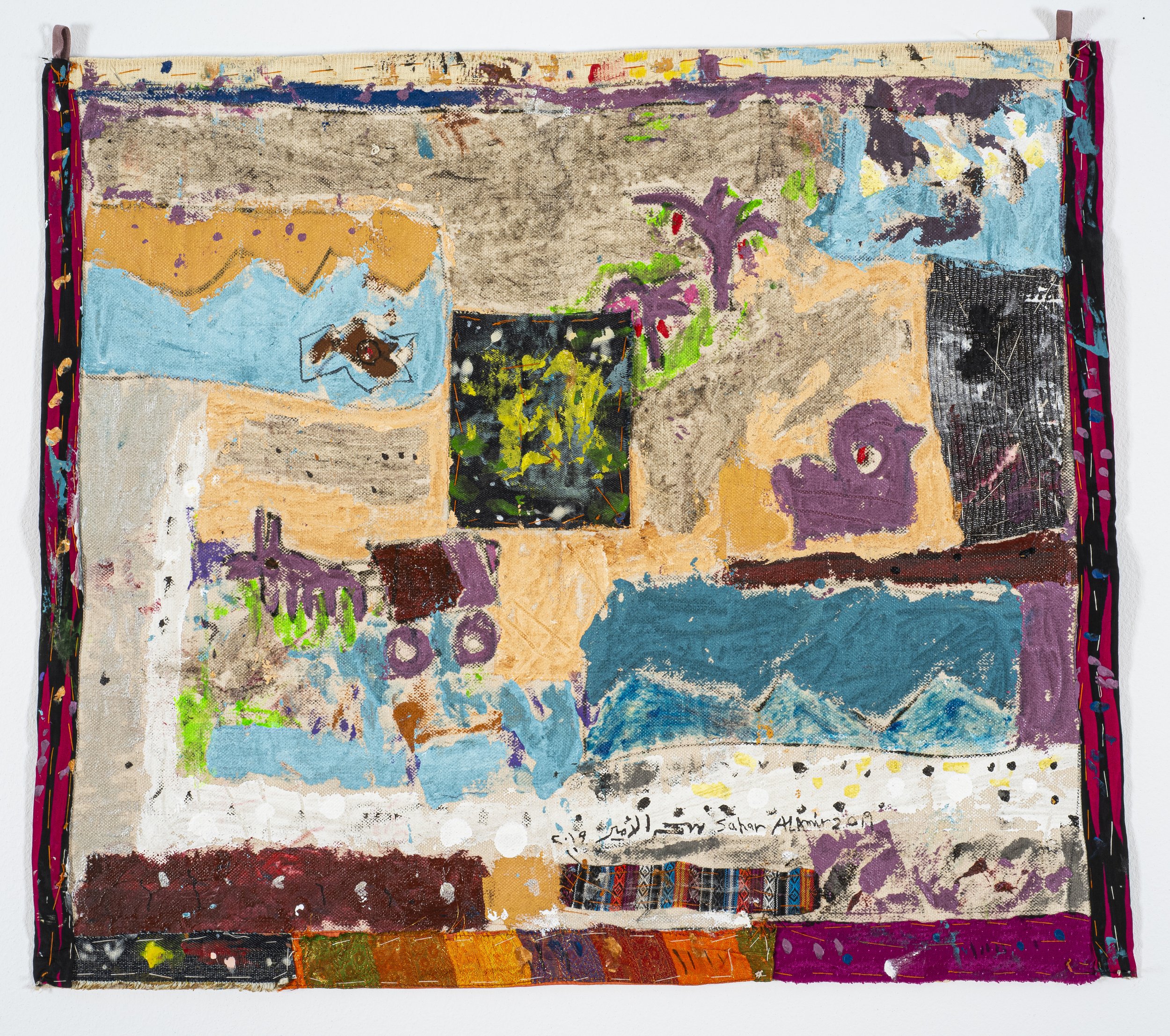
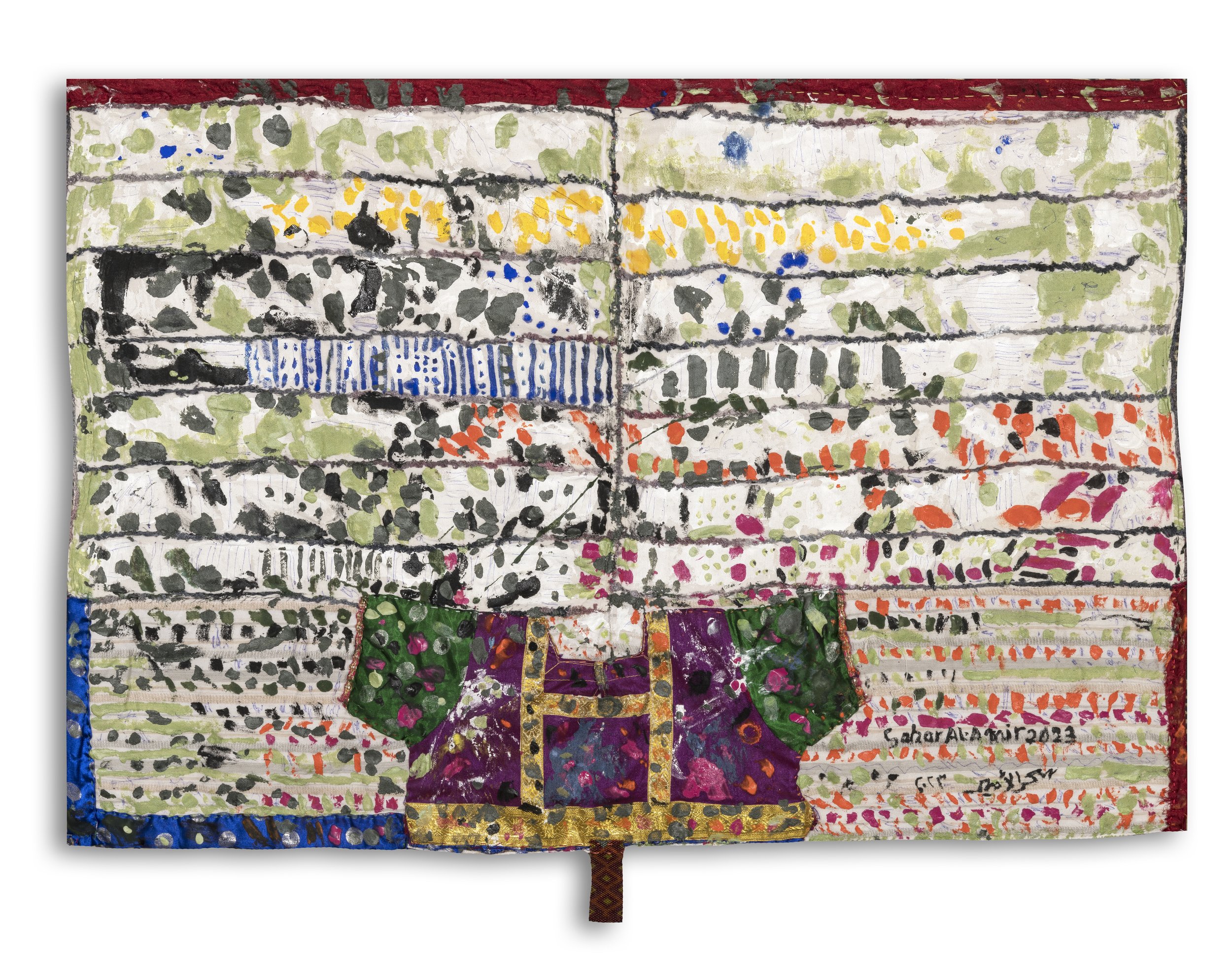
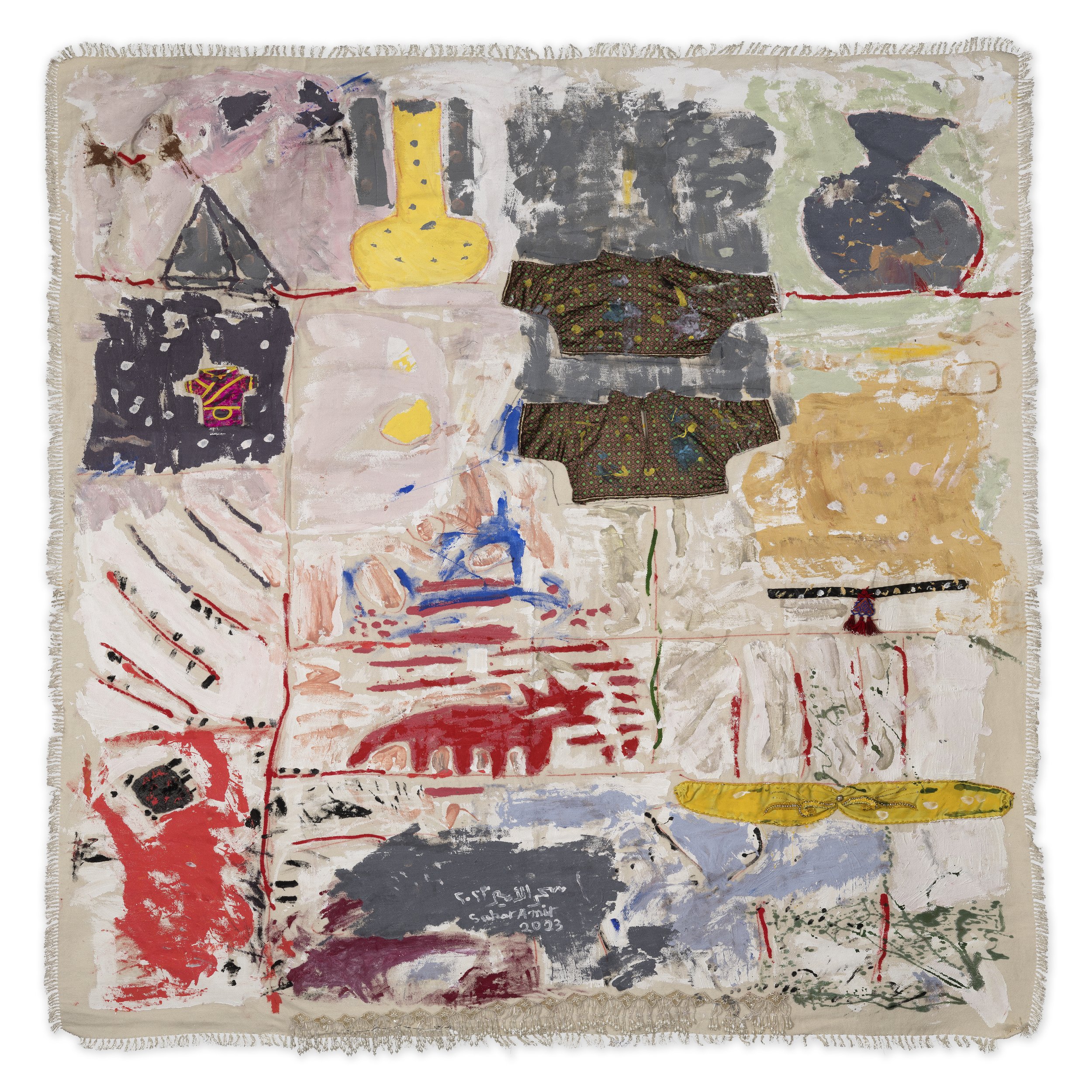
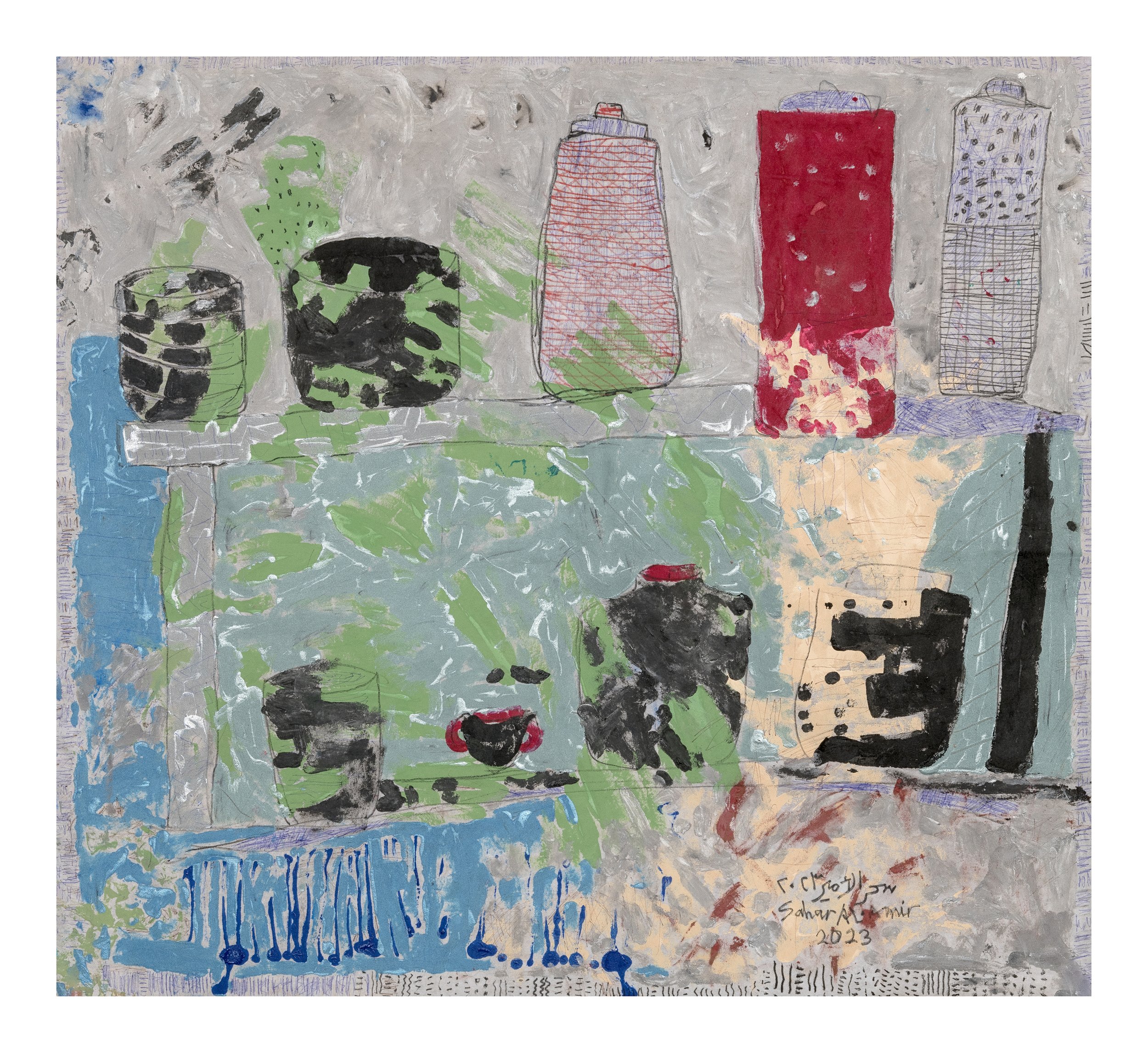
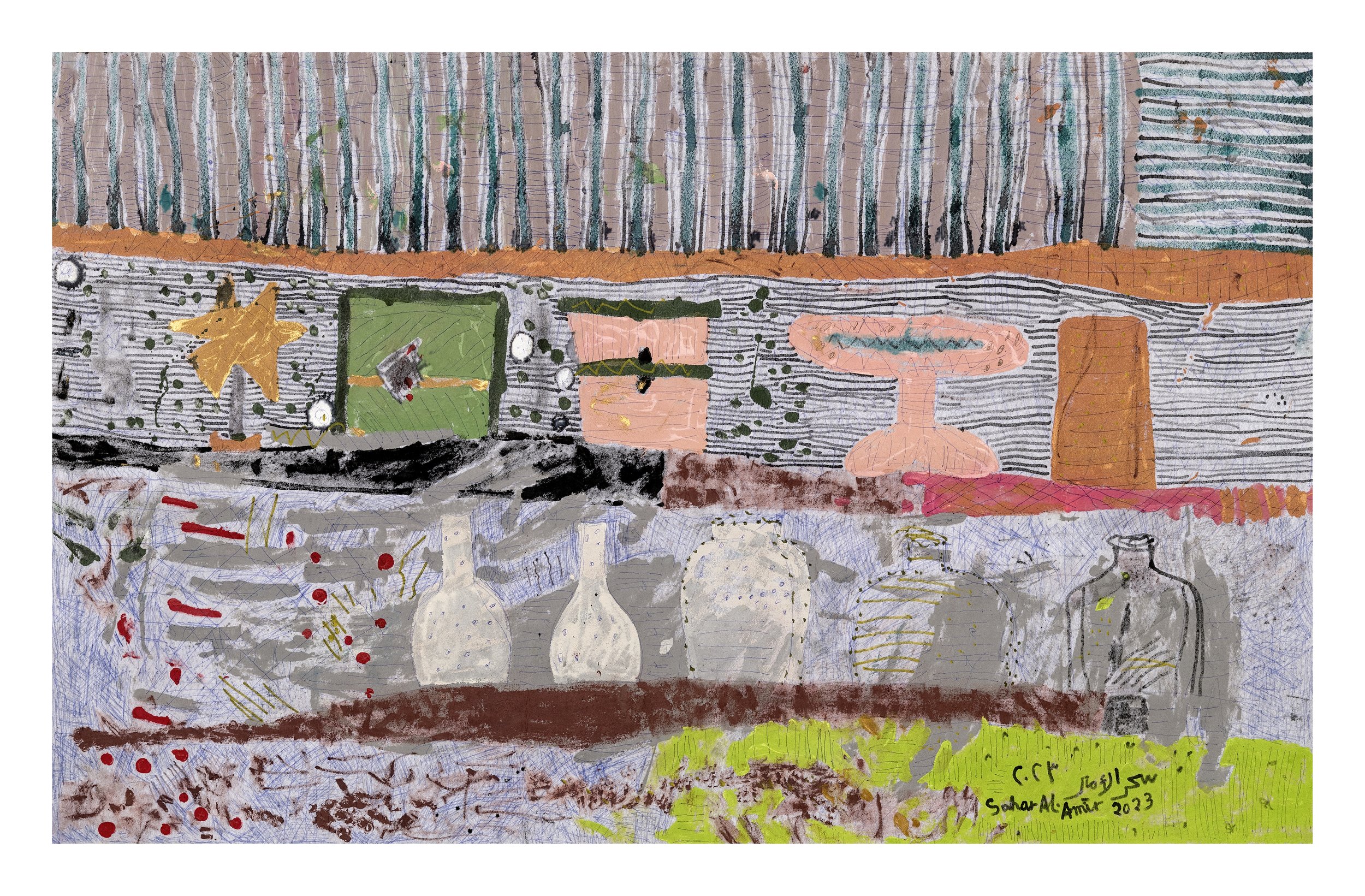
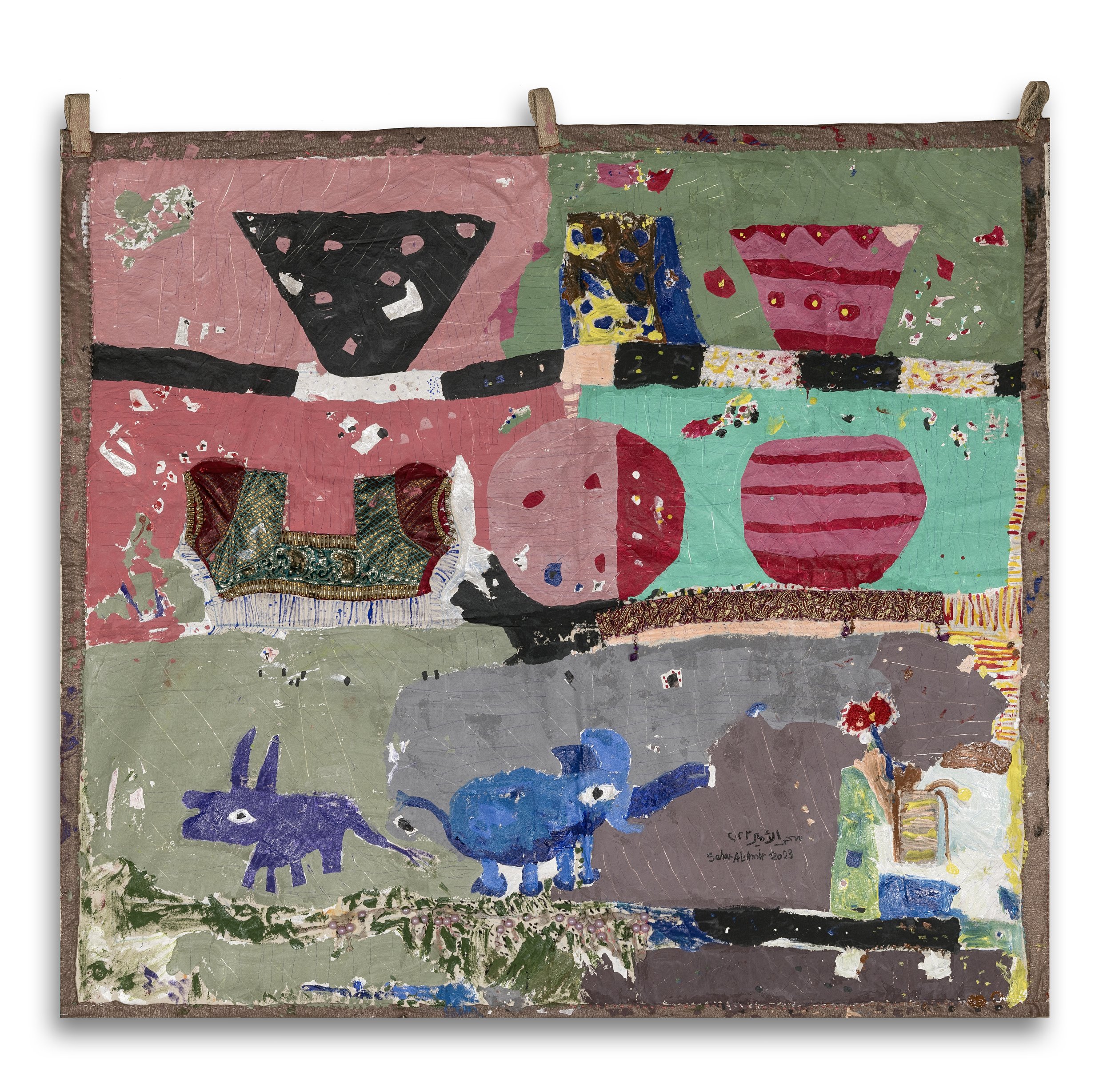
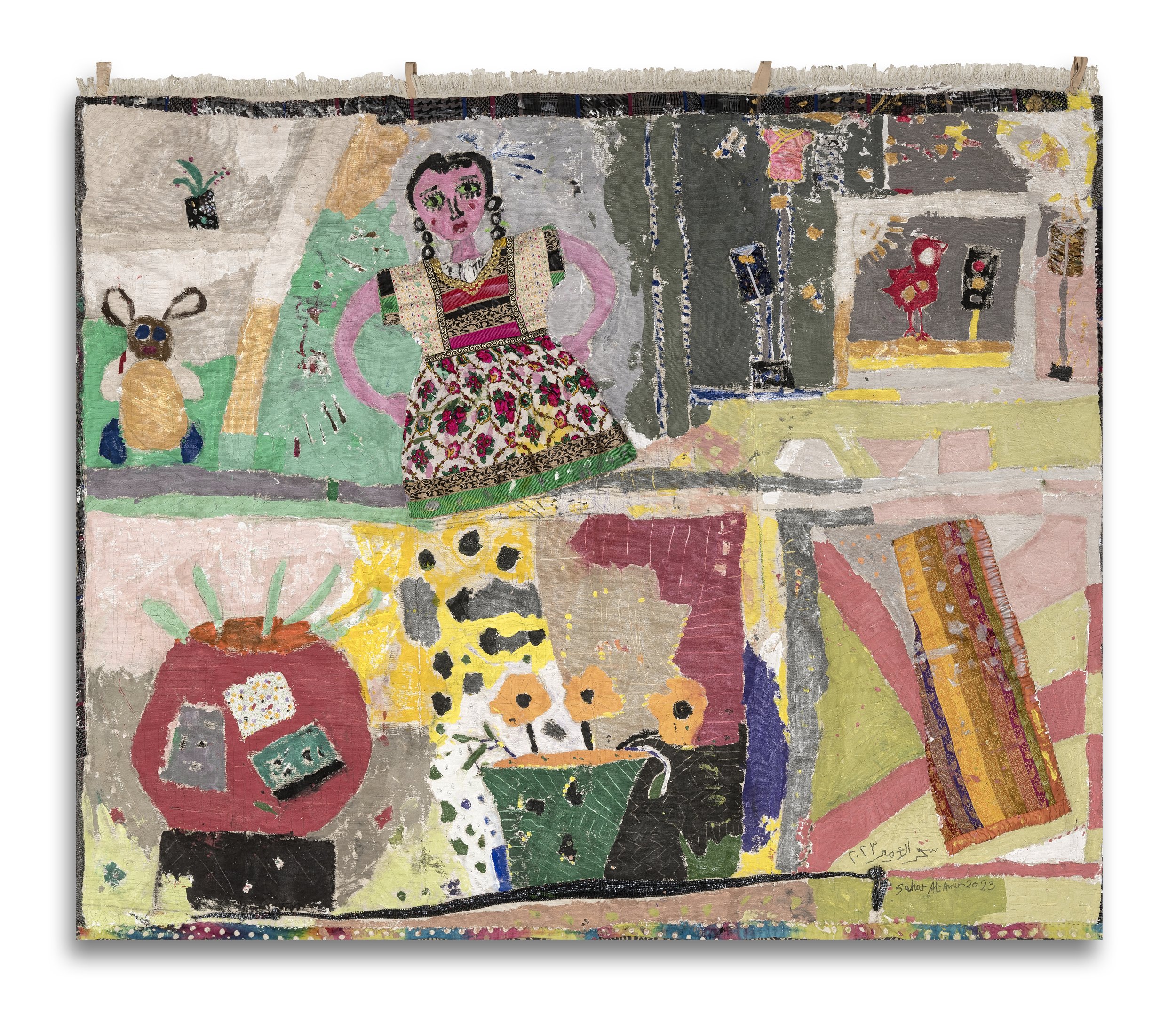
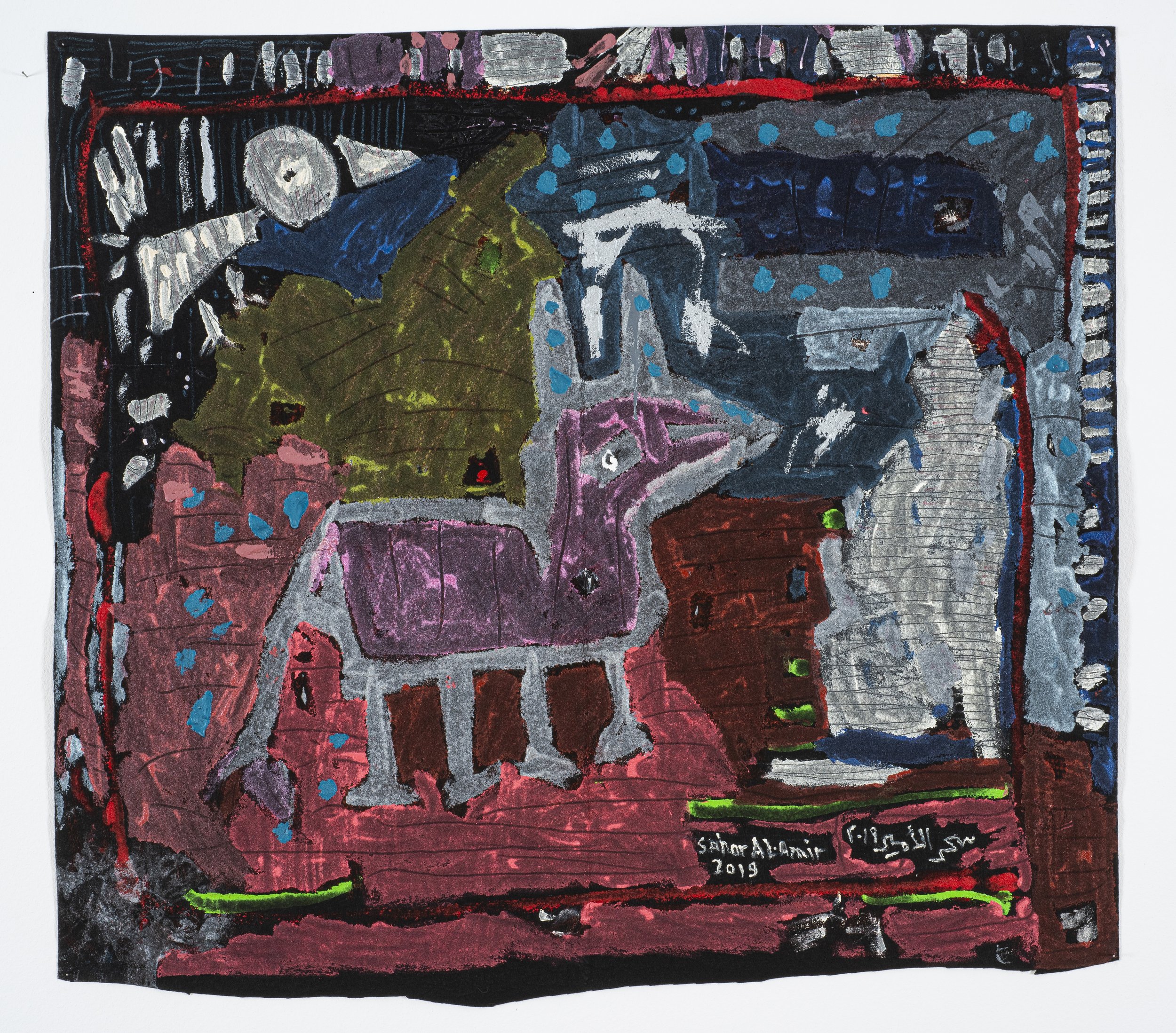
Shelves, by design, are spaces we create within our homes to store and display items that hold emotional value or evoke personal significance. These items are not just objects; they are embodiments of our feelings, experiences, and dreams. Whether it's a collection of books, cherished mementos, or childhood toys, each shelf becomes a visual narrative of our lives.
In a broader philosophical context, these shelves become metaphors for the human mind. Memories, like the items on a shelf, are stored, organized, and displayed within our consciousness. Arranging memories on the shelf is akin to how we construct the narratives and understand our experiences. Shelves may appear organized, but they also reflect the complex and sometimes chaotic nature of human memory.
In the upcoming exhibition by Sahar Al-Amir, a profound philosophical exploration is set to be unveiled, shedding light on the intricacies of existence and the deep symbolism behind what we usually consider mere shelves. This collaborative endeavor between Cairo’s Ubuntu Gallery and Amman’s Dar Al-Anda Art Gallery appropriately bears the title (SHELVES). It invites us to delve deeper into these humble vessels of memory, wonder, and humanity.
Sahar Al-Amir's artworks are inherently philosophical, transcending the superficial layers of aesthetic expression. Rooted in the core of her inner child, Sahar creates works that serve as philosophical symbols, laden with symbolism and contemplative depth. Sahar’s artistic approach is a symphony of diverse techniques, ranging from the precise application of pen scribbles to the vibrant interplay of oil and acrylic colors. Central to her style is the intricate collage technique, where she merges countless materials, including fragments of her childhood dresses. This interplay between personal nostalgia and artistic expression adds existential layers to her creations. At times, she skillfully weaves memories into her works through the art of knitting, blending the past into the present moment.
In her works, Sahar Al-Amir often presents unique perspectives, as if gazing through the eyes of a flying bird or an ant on the ground. These non-traditional viewpoints become philosophical windows that open up alternative realities, challenge our conventional perceptions, and invite us to contemplate the relativity of existence.
The dresses that appear in Sahar Al-Amir’s works play a multifaceted symbolic role, resembling human figures and vessels of identity. Handcrafted, they represent an authentic expression of the human experience and self-discovery, packaged in the form of doll-like dresses. These dresses transcend the boundaries between the physical and metaphysical, balancing the weight of personal history and collective consciousness.
Inspired by the rich fabric of children's tales, Sahar Al-Amir seamlessly integrates symbols and characters from these narratives into her creations. Her works transform into fantastical philosophical tales, inviting viewers on a journey of contemplation and existential reflection. The horizontal arrangement of elements in her artistic works mirrors the precise arrangement of cherished items on the shelves of our existence.
The outer frames that encase her artworks serve as extensions of the philosophical discourse embedded in her creations. They are not mere ornamentation but integral parts of the narrative, echoing the interconnectedness of all elements within the vast tapestry of existence.
In summary, Sahar Al-Amir's upcoming exhibition, (SHELVES) transcends the boundaries of traditional artistic expression. It invites us to contemplate the philosophical depths of memory and its relationship with the shelves we build in our lives. Shelves, whether in our homes or in our minds, are vessels for our stories, dreams, and essence. They remind us that memory is not a fixed collection but a living, evolving narrative of our existence.
Congratulations to you my talented friend, Sahar Al-Amir.
Ibrahim Khatab
Egyptian artist
September 2023
"أرفف: معرض لسحر الأمير“
الرفوف، تلك القطع المتواضعة من الأثاث الموجودة في كل منزل، يمكن أن تكون بمثابة مستودعات عميقة للذكريات والمعاني. إلى جانب وظيفتها النفعية، تحمل الرفوف بعدًا فلسفيًا غالبًا ما يمر دون أن يلاحظه أحد. في هذا التأمل، نتعمق في العمق الفلسفي للأرفف، ونستكشف دورها كأوعية للذكريات.
الرفوف، حسب تصميمها، هي مساحات ننشئها داخل منازلنا لحفظ وعرض العناصر التي تحمل قيمة عاطفية أو تستحضر أهمية شخصية. هذه العناصر ليست مجرد كائنات؛ إنهم تجسيد لمشاعرنا وتجاربنا وأحلامنا. سواء كانت مجموعة من الكتب، أو التذكارات العزيزة، أو ألعاب الطفولة، فإن كل رف يصبح سردًا مرئيًا لحياتنا.
وفي سياق فلسفي أوسع، تصبح هذه الرفوف كناية عن العقل البشري. الذكريات، مثل العناصر الموجودة على الرف، يتم تخزينها وتنظيمها وعرضها داخل وعينا. إن وضع الذكريات على الرف يشبه كيفية بناء عقولنا للسرد وفهم تجاربنا. قد تبدو الرفوف منظمة، لكنها أيضًا انعكاسات للطبيعة المعقدة والفوضوية أحيانًا للذاكرة البشرية.
في المعرض الفني القادم لسحر الأمير، من المقرر أن يتم الكشف عن استكشاف فلسفي عميق، يسلط الضوء على تعقيدات الوجود والرمزية العميقة وراء ما نعتبره عادة مجرد رفوف. هذا المسعى التعاوني، لجاليري أبنتو في مصر وجاليري دار الأندي في عمان، يحمل العنوان المناسب "ارفف". إنه يدعونا إلى التعمق أكثر في هذه الأوعية المتواضعة من الذاكرة والعجب والإنسانية.
إن الأعمال الفنية لسحر الأمير هي أعمال فلسفية بطبيعتها، وتتجاوز الطبقات السطحية للتعبير الجمالي. متجذرة في جوهر طفلها الداخلي، فهي تصنع أعمالًا تكون بمثابة رموز فلسفية، محملة بالرمزية والعمق الاستبطاني. منهجيتها الفنية عبارة عن سيمفونية من التقنيات المتنوعة، بدءًا من التطبيق الدقيق لخربشات القلم إلى التفاعل النابض بالحياة بين ألوان الزيت والأكريليك. من الأمور المركزية في أسلوبها هي تقنية الكولاج المعقدة، حيث تدمج عددًا لا يحصى من المواد، بما في ذلك أجزاء من فساتين طفولتها. يضيف هذا التشابك بين الحنين الشخصي والتعبير الفني طبقات من الأهمية الوجودية إلى إبداعاتها. وفي بعض الأحيان، تنسج الذكريات ببراعة في أعمالها من خلال فن الحياكة، ودمج الماضي في اللحظة الحالية.
في أعمالها، تقدم سحر الأمير في كثير من الأحيان وجهات نظر فريدة، كما لو كانت تحدق من خلال عيون طائر يطير أو نملة على الأرض. تصبح وجهات النظر غير التقليدية هذه نوافذ فلسفية تطل على حقائق بديلة، وتتحدى تصوراتنا التقليدية وتدعونا إلى التفكير في نسبية الوجود.
تأخذ الفساتين التي تظهر في أعمالها دورًا رمزيًا متعدد الأوجه، حيث تشبه الشخصيات البشرية وأوعية الهوية. إنها مصنوعة يدوياً، وهي تمثل تعبيراً أصيلاً عن التجربة الإنسانية واكتشاف الذات، وهي مغلفة على شكل فستان يشبه العرائس. تجتاز هذه الفساتين الحدود بين الجسدي والميتافيزيقي، وتحمل ثقل التاريخ الشخصي والوعي الجماعي.
مستوحاة من النسيج الغني لقصص الأطفال، تدمج سحر الأمير الرموز والشخصيات من هذه الروايات بسلاسة في مؤلفاتها. تتحول أعمالها إلى حكايات فلسفية خيالية، تدعو المشاهدين إلى الانطلاق في رحلة من التأمل والتأمل الوجودي. يعكس الترتيب الأفقي للعناصر الموجودة في أعمالها الفنية الترتيب الدقيق للعناصر العزيزة على رفوف وجودنا.
تعتبر الإطارات الخارجية التي تغلف أعمالها الفنية بمثابة امتداد للخطاب الفلسفي المتضمن في إبداعاتها. فهي ليست مجرد زينة. بل هي جزء لا يتجزأ من السرد، وتكرر صدى الترابط بين جميع العناصر داخل نسيج الوجود الواسع.
باختصار، معرض سحر الأمير القادم "أرفف" يتجاوز حدود التعبير الفني التقليدي. إنه يدعونا إلى التفكير في الأعماق الفلسفية للوجود والذاكرة والحكمة الخالدة الموجودة في الروح الطفولية. من خلال فنها، توقظ الفيلسوف الداخلي لدينا، وتحثنا على إعادة النظر في أهمية الرفوف التي تحتوي على ذكرياتنا وأحلامنا وتطلعاتنا. في هذا الاستكشاف الفلسفي العميق، يعد معرض "أرفف" بأن يكون معرضًا يتجاوز حدود الفن، ويدعونا إلى التفكير في الأسئلة الأبدية التي تكمن وراء سطح حياتنا
علاوة على ذلك، يتحدى عمل الأمير الطبيعة الخطية للذاكرة. الذكريات لا تقتصر على ترتيب زمني؛ يمكنهم التعايش والتقاطع بطرق غير متوقعة. وكما تتحدى أعمالها الفنية وجهات النظر التقليدية، فإن الذاكرة أيضًا يمكن أن تكون متعددة الأبعاد ومرنة.
وفي الختام، فإن معرض "أرفف" لسحر الأمير يتجاوز المألوف ويدعونا للتأمل في العمق الفلسفي للذاكرة وعلاقتها بالرفوف التي نبنيها في حياتنا. الرفوف، سواء في منازلنا أو في عقولنا، هي أوعية لقصصنا وأحلامنا وجوهرنا. إنها تذكرنا بأن الذاكرة ليست مجموعة ثابتة، بل هي سرد حي ومتطور لوجودنا
الف مبروك يافنانة سحر
ابراهيم الخطاب
فنان مصري
2023 سبتمبر / أيلول
SEE PHOTOS FROM THE OPENING (CLICK TO ENLARGE)
About Sahar AlAmir
Born in 1970, Sahar Al-Amir holds a Bachelor’s Degree from the Faculty of Fine Arts in 1993 from Alexandria University. She has displayed her artwork in several places such as Cairo telier, Alexandrian Atelier, and Cairo Opera House, in addition to several solo exhibitions in Ubuntu Art Gallery, Zamalek in 2015, 2016, 2017, 2020, and 2022.
She participated in international fairs notably Context Miami 2016 & 2017, (1-54) London & Newyork 2019, AKAA 2021
Her painting style is characterized by her freedom of expression using a variety of mediums & materials.
She won the State Award for Innovation, and Graphics in 1995. Sahar has won several international & national awards as well. She has holdings in collections in Egypt, Italy, Canada, Japan & the Ministry of Culture in Egypt.

To the Painting, O Space by Jafer Taoun
Jafer Taoun
“To the Painting, O Space”
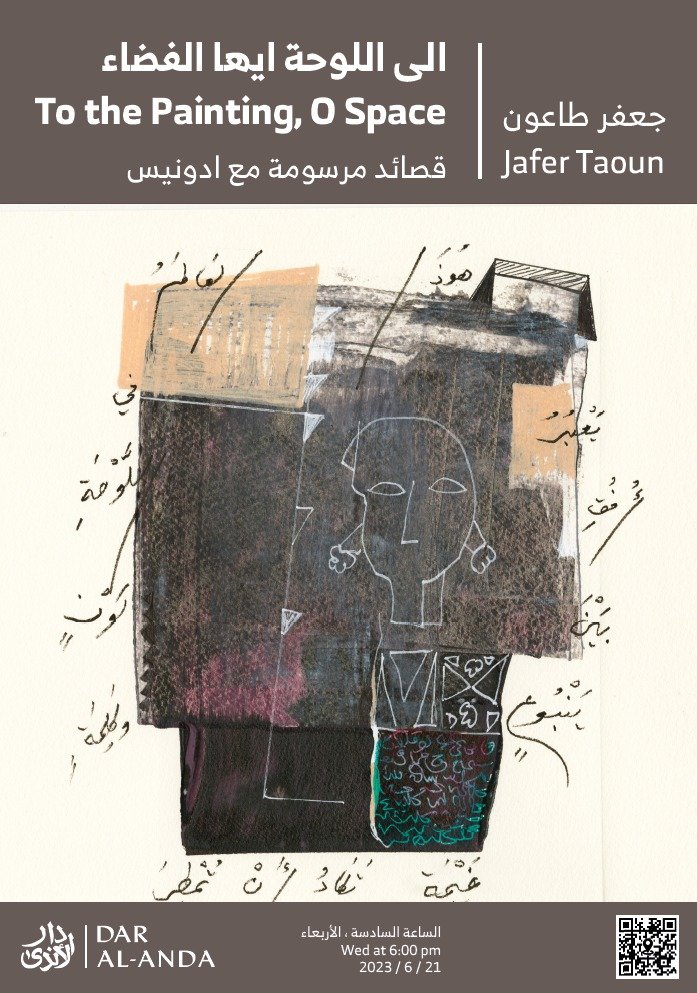
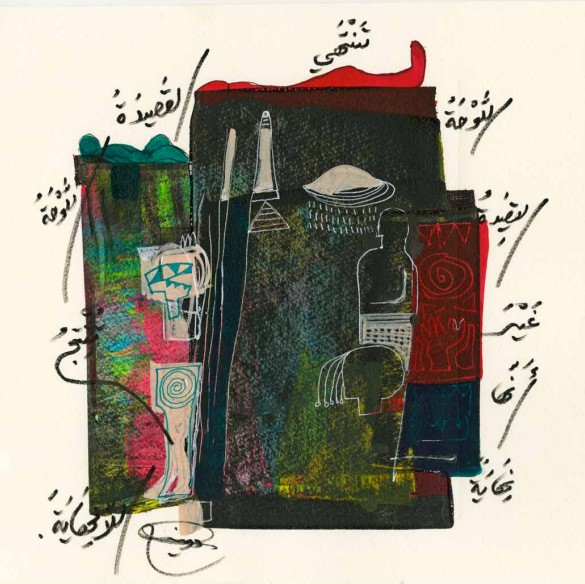
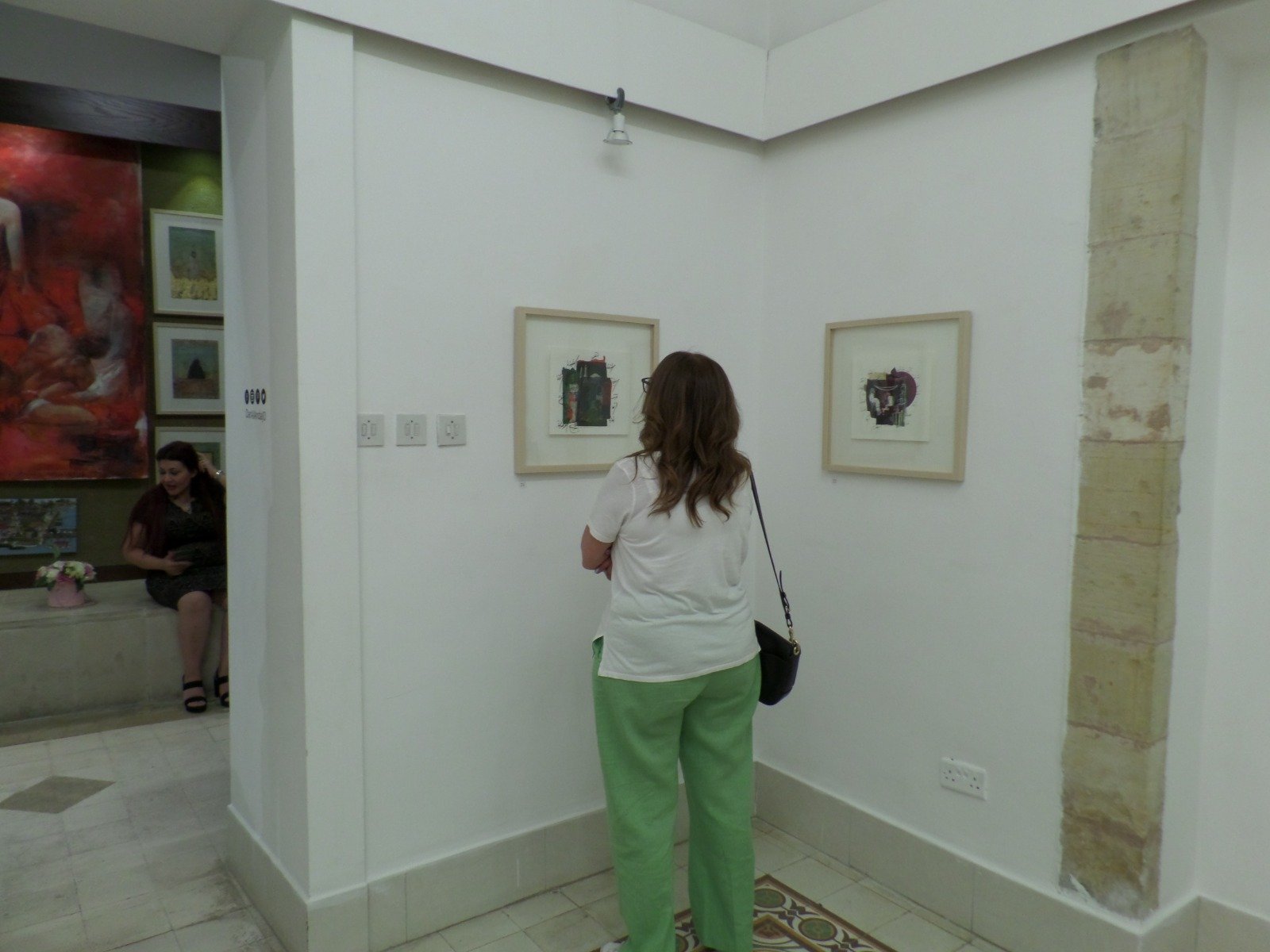
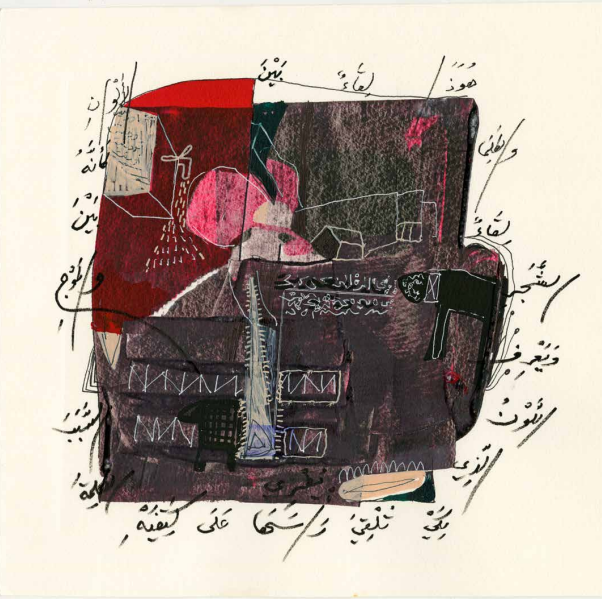
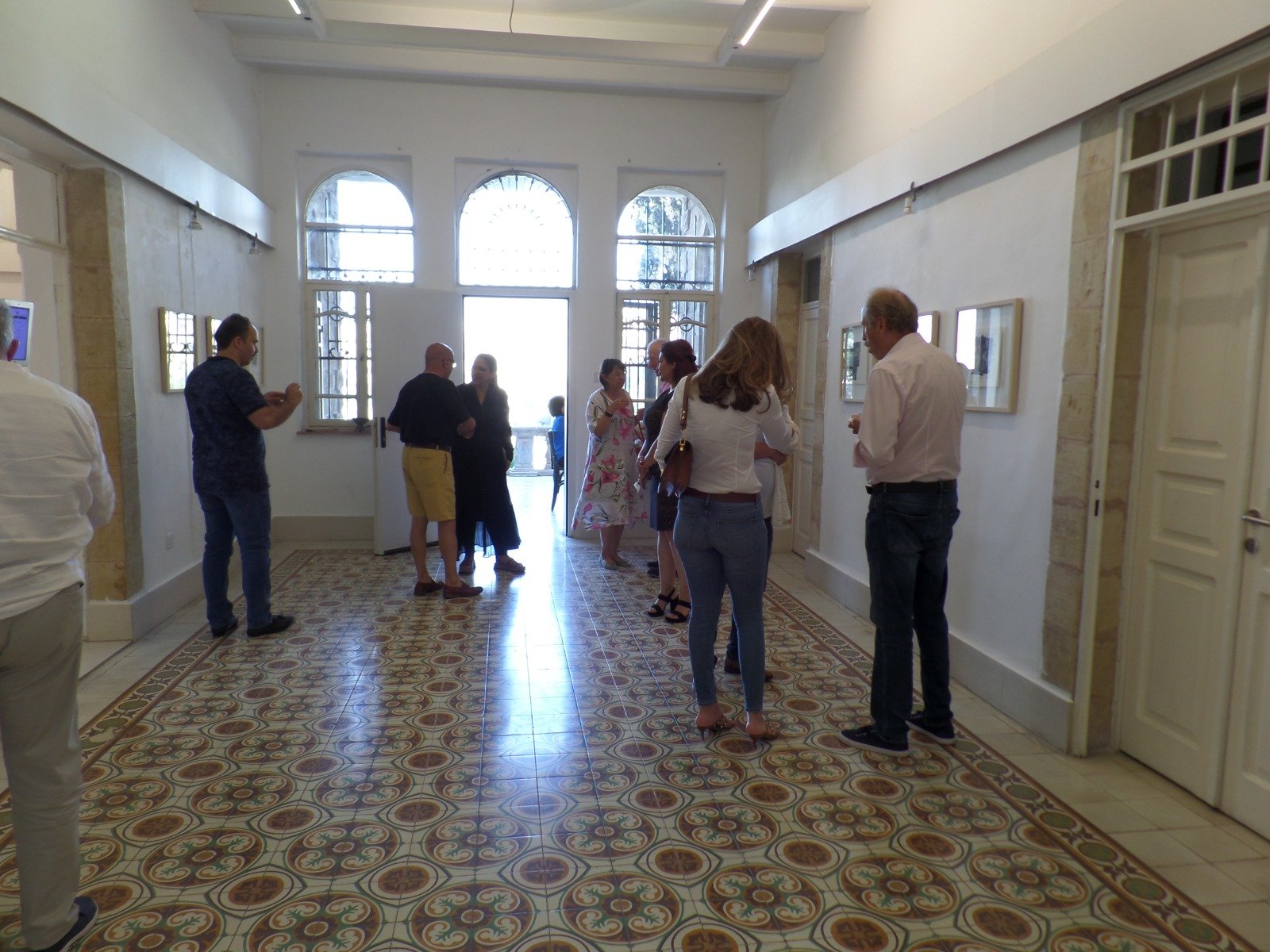
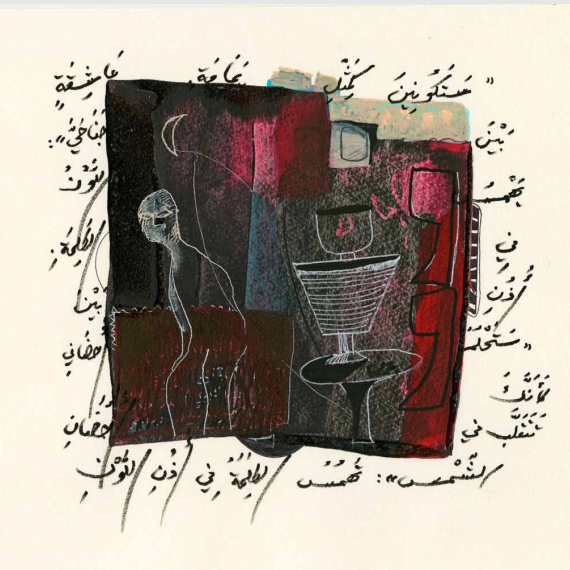
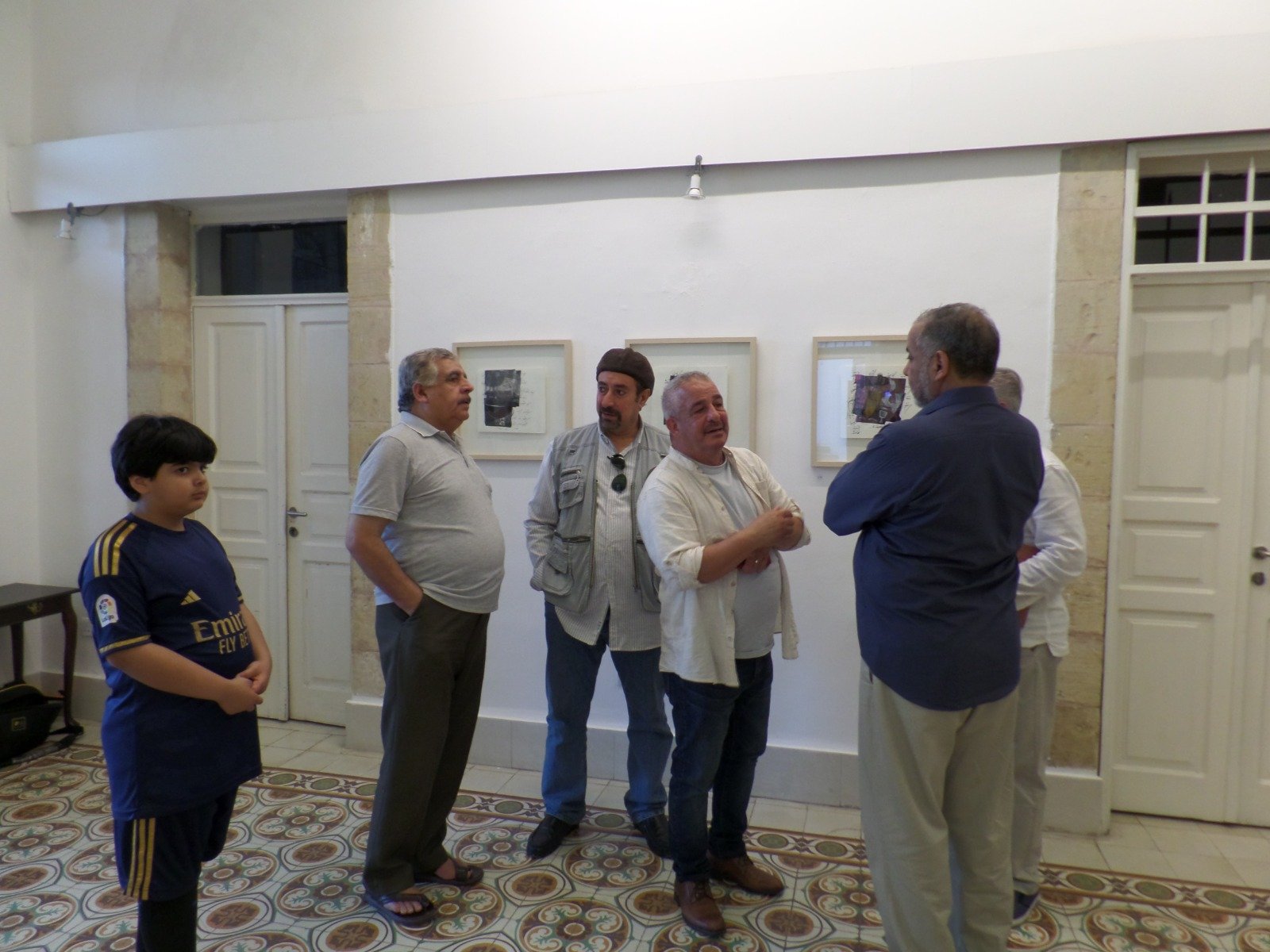
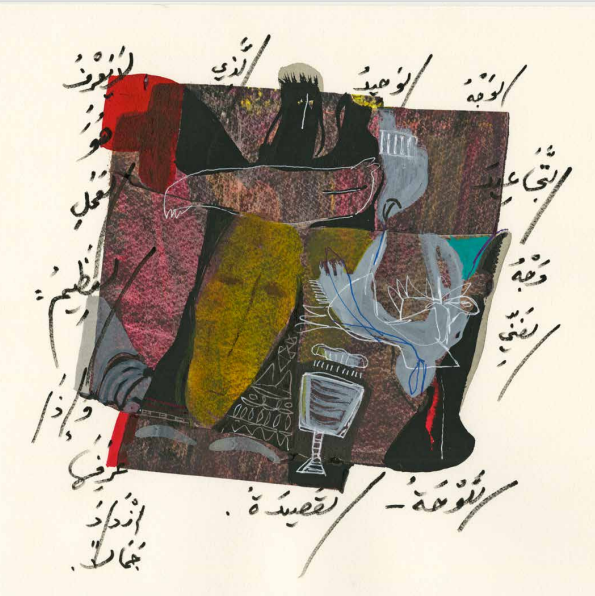
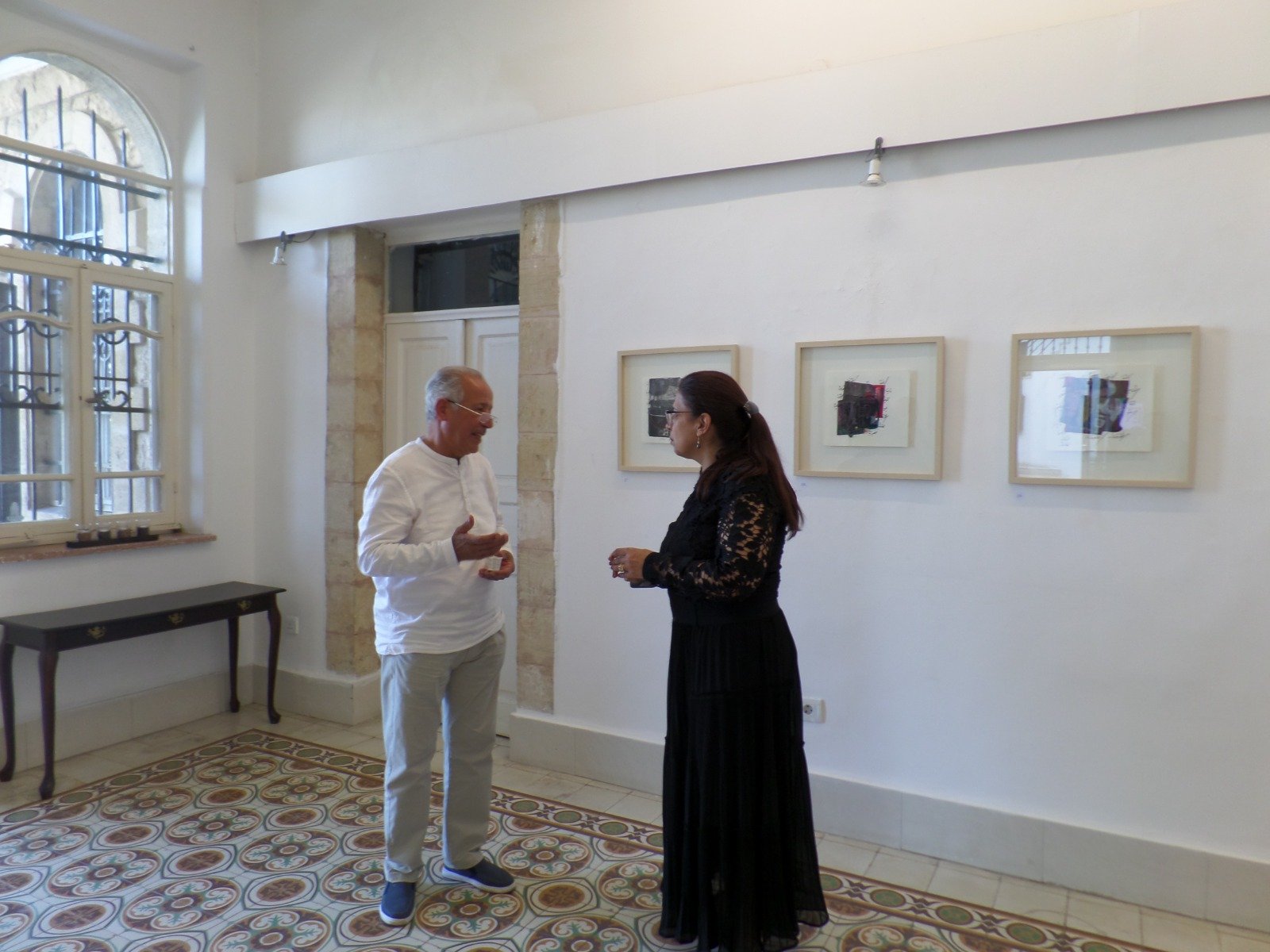
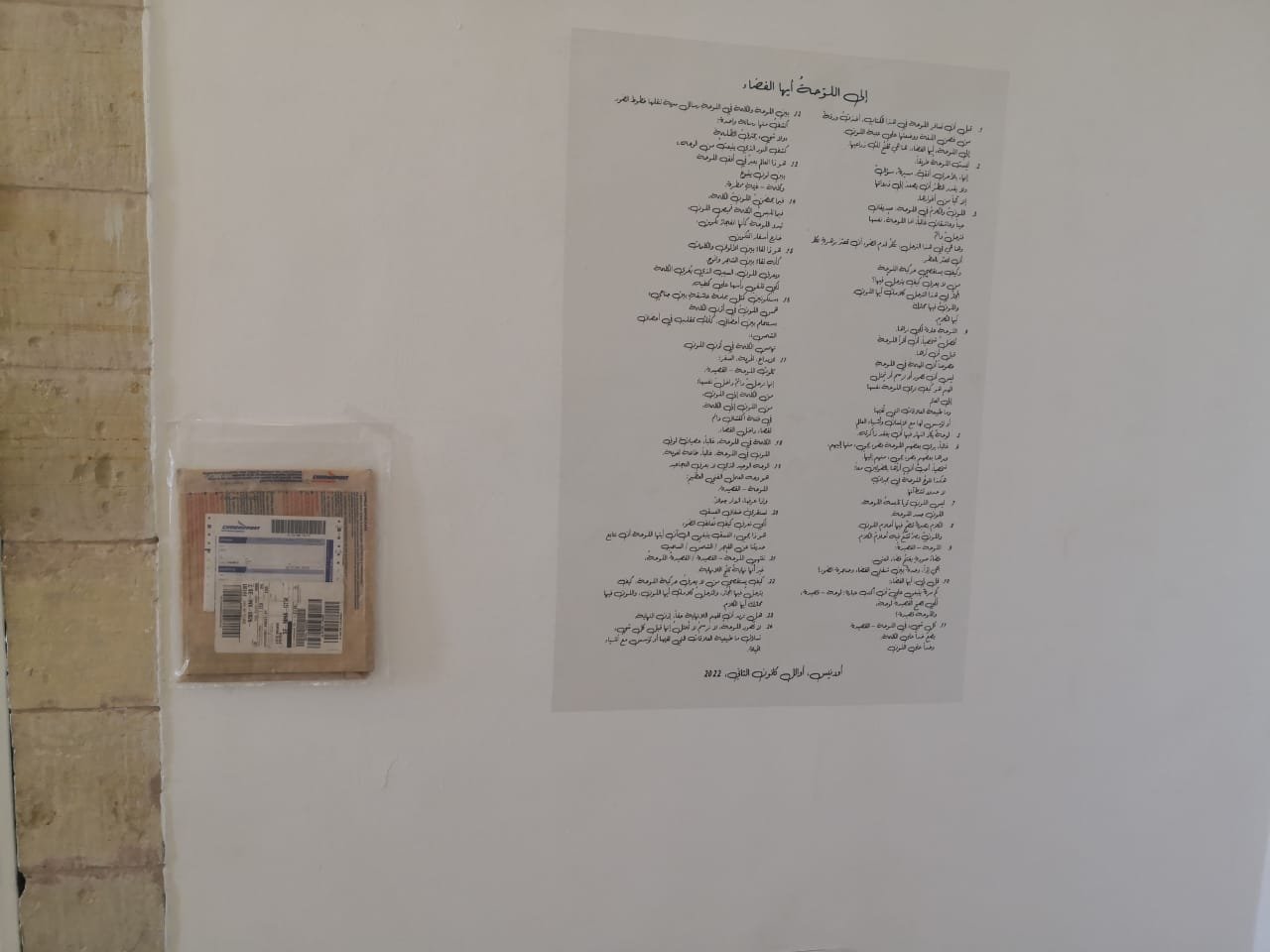
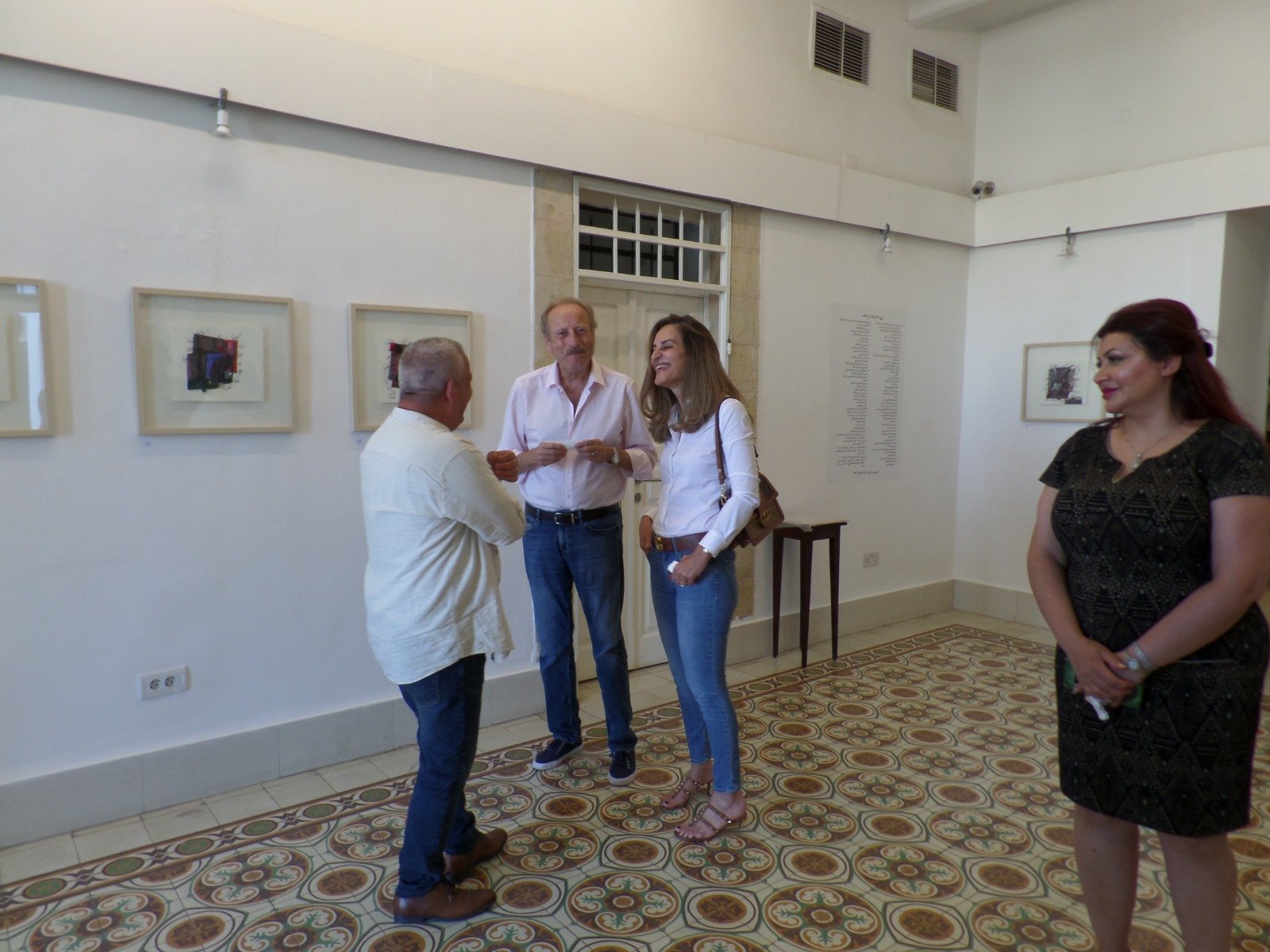
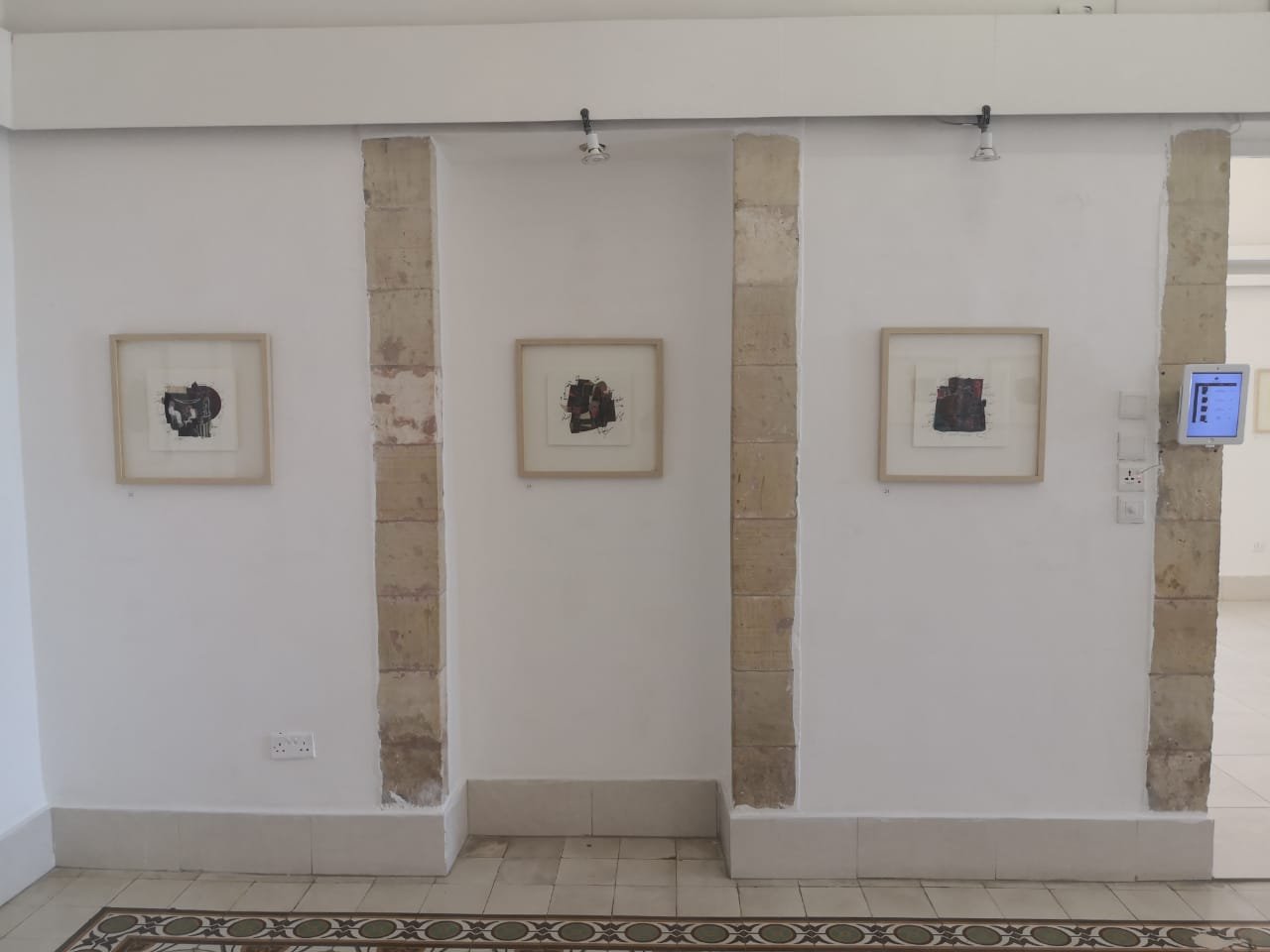
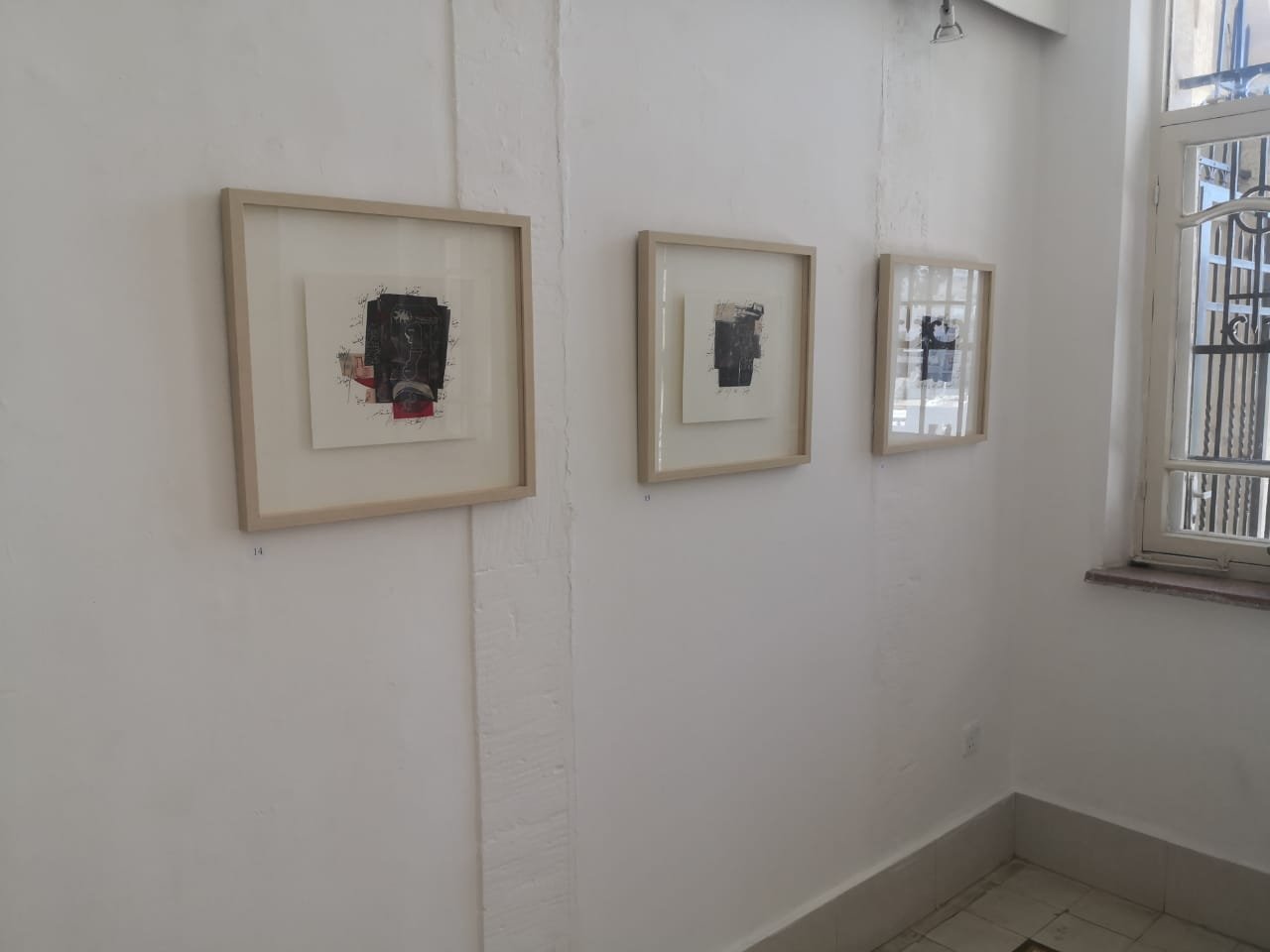
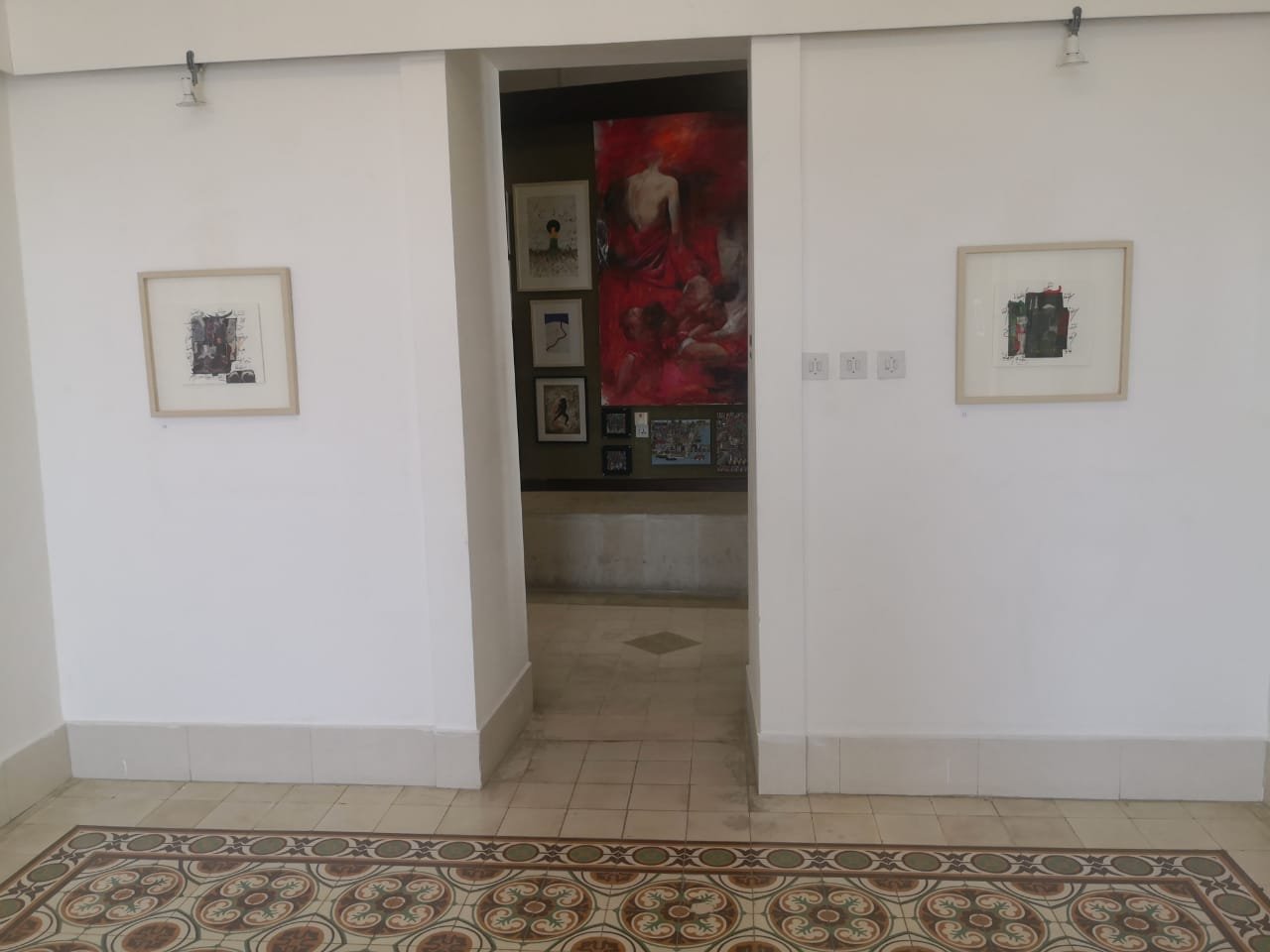
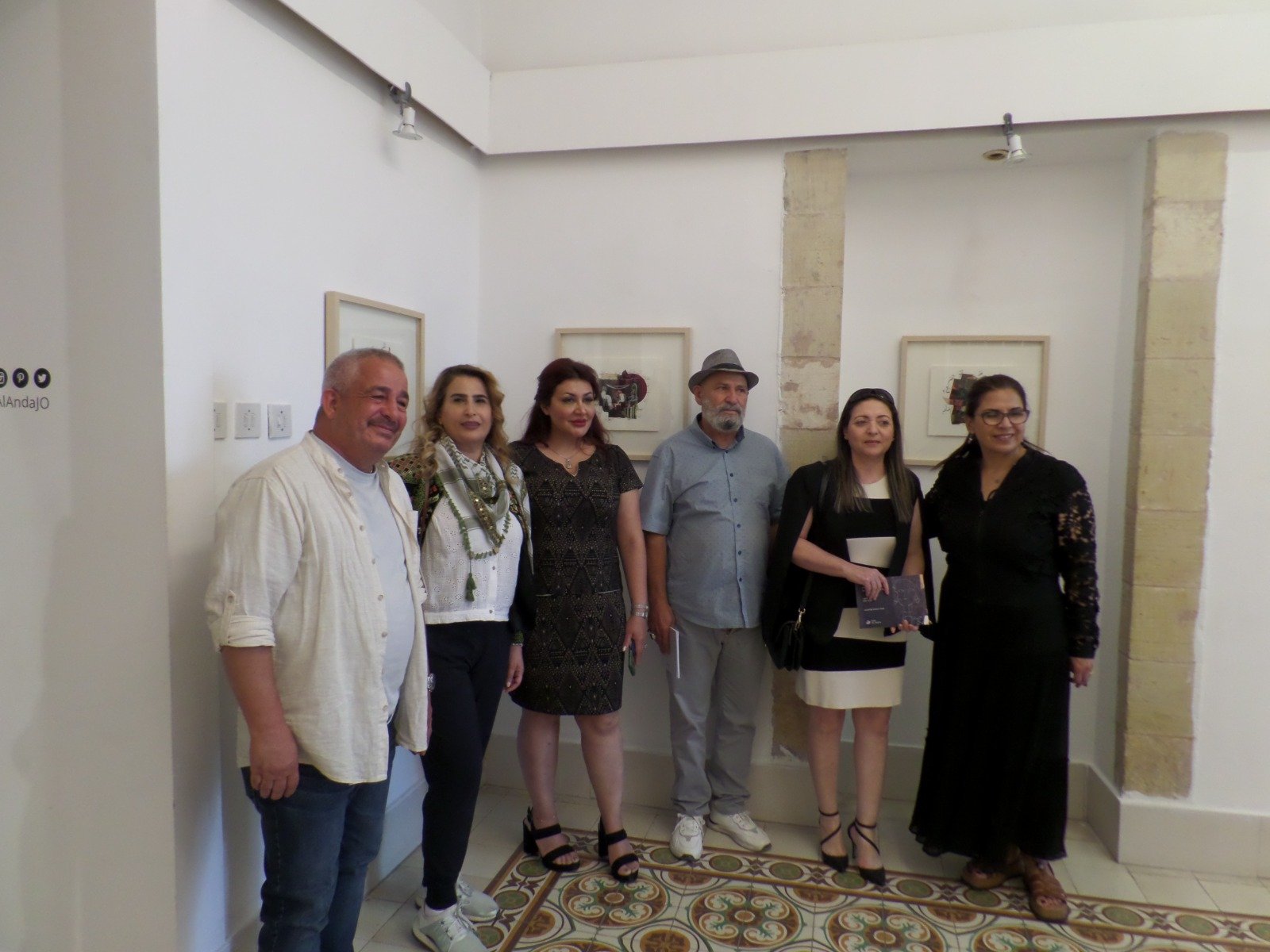
"To the Painting, O Space” is an awe-inspiring exhibition held at Dar Al-Anda Art Gallery in Amman. The paintings featured in this exhibition carry the soul of the great Arab poet Adonis and the Iraqi artist Jafer Taoun. Such celebrations are characterized by the presence of a number of poets, writers, artists, and media figures. Thus, a deep sense of brotherhood is achieved between the poet and the artist in front of the audience. This welding or intertwining between poetry and art is very ancient. Adonis presented texts in his own handwriting after receiving the original works of the artist Jafar Taoun in Paris. Here, the artist presented color, Iraqi identity, and craftsmanship in paintings that are extremely precise, and decorated with Adonis' texts. What happens between the poetic text and the painting is a loving embrace, their beauty reaches the absolute because poetry and art are infinite. A statement of poetry and art, that says we do not fear you, O death. We stare at you with the vigor of life. Just as poetry and art remain a creative addition to humanity in this world inhabited by weapons, tanks, and guns.
Art and poetry are counter to all of this. The cry of the poet and the artist is sometimes unheard amid this chaos. The chaos of values and misery. But it is heard like the fluttering of a lonely bird passing quickly in this flying universe, creating beauty as it flies.
- Zaher Al-Ghafrari, Omani poet

Kurka3a by Lamia Fakhoury & Reem Mouasher
The third iteration of the Kurka3a series continues its main objective of spreading joy through sculpture. This time in an installation of large scale turtles made of junk metal forged and foraged in East Amman.
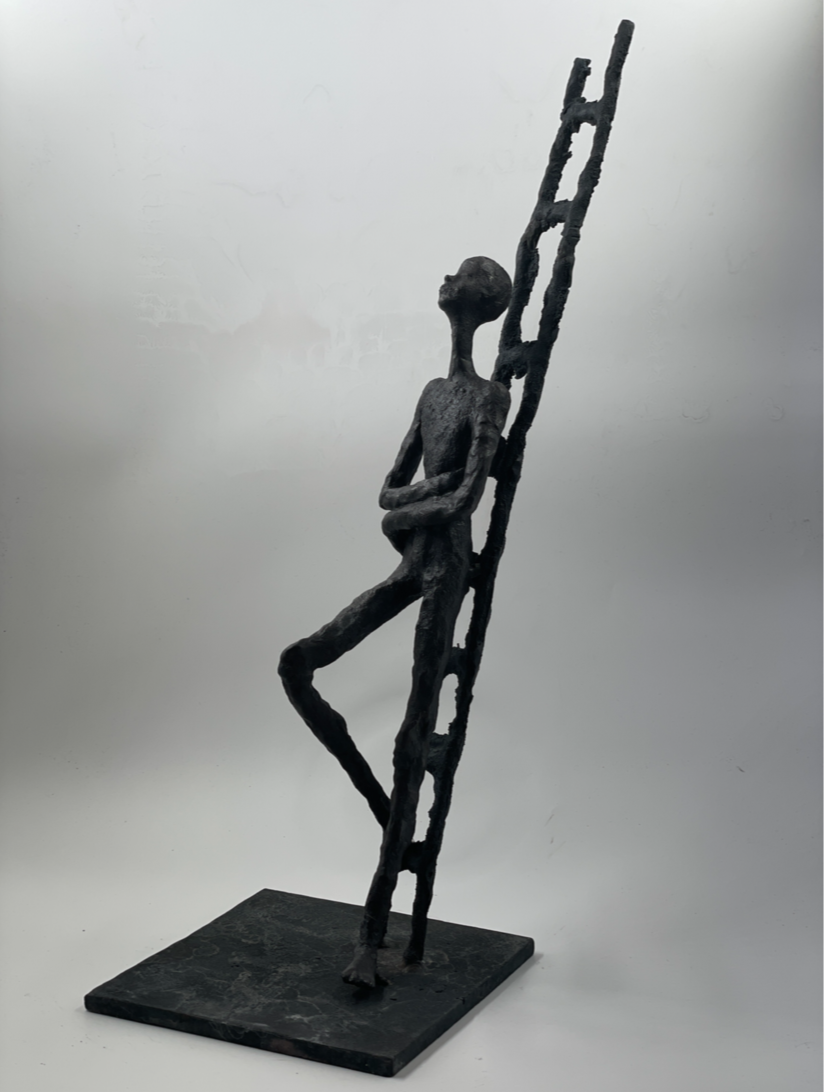
Salalem by Lamia Fakhoury
Exploring the the vast symbolism and possibilities born of juxtaposing a practical object and its relationship to the human form, Lamia Fakhoury created this collection of Steel & Cast-Iron sculptures that is playful in its execution and impressive in its masterful simplicity.
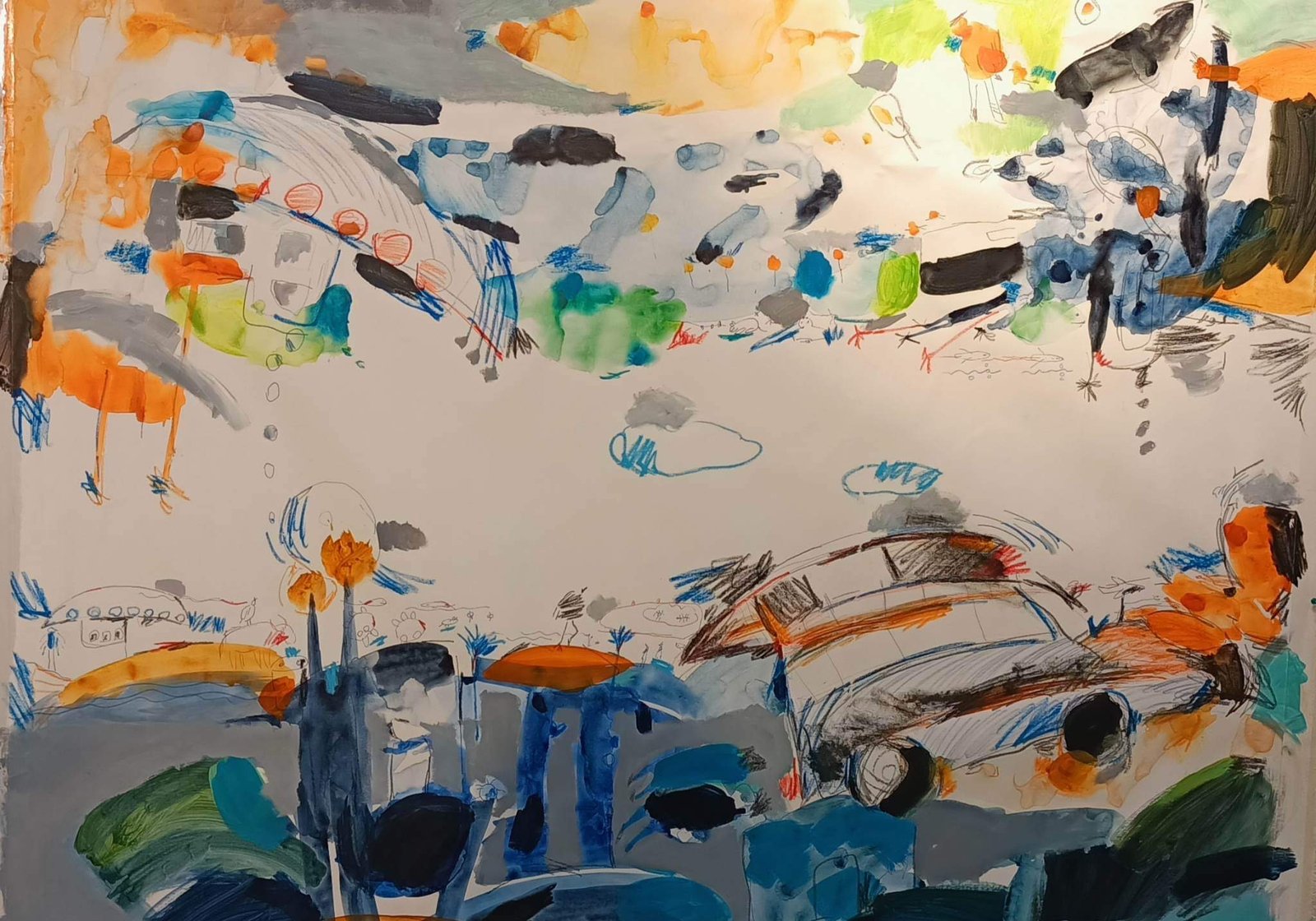
"No Gravity" by Hamid Saeed
Our inaugural exhibition of 2023, which features several new works by celebrated Egyptian visual artists Hamid Saeed.
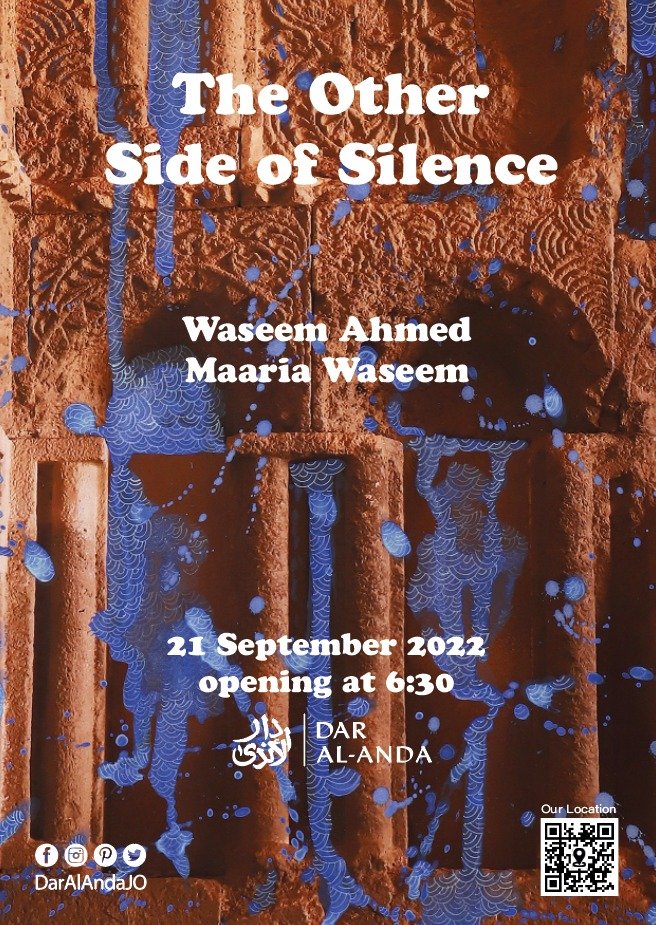
The Other Side of Silence
A duo exhibition by Pakistani Artist Waseem Ahmad & Maria Waseem
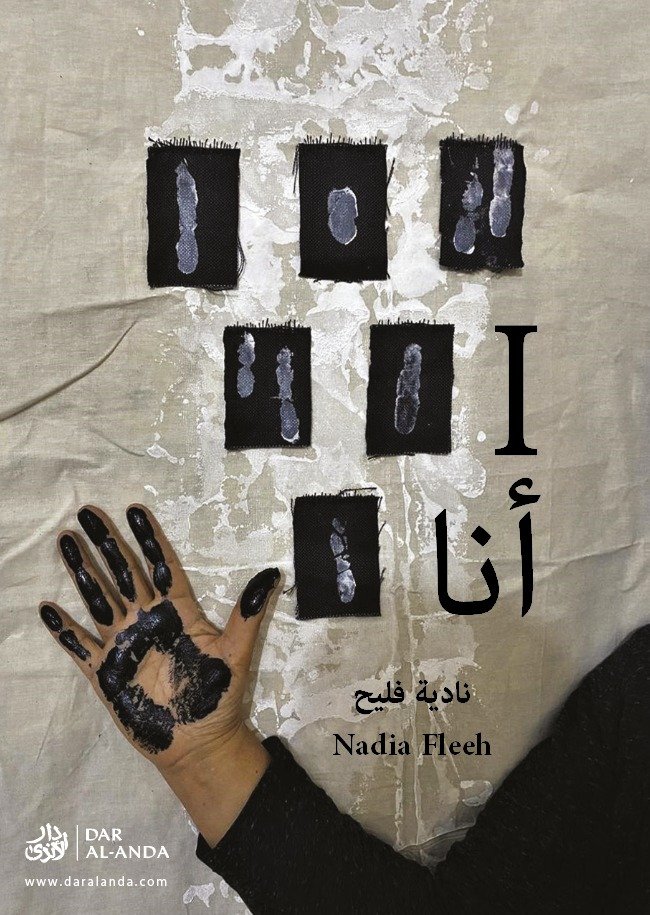
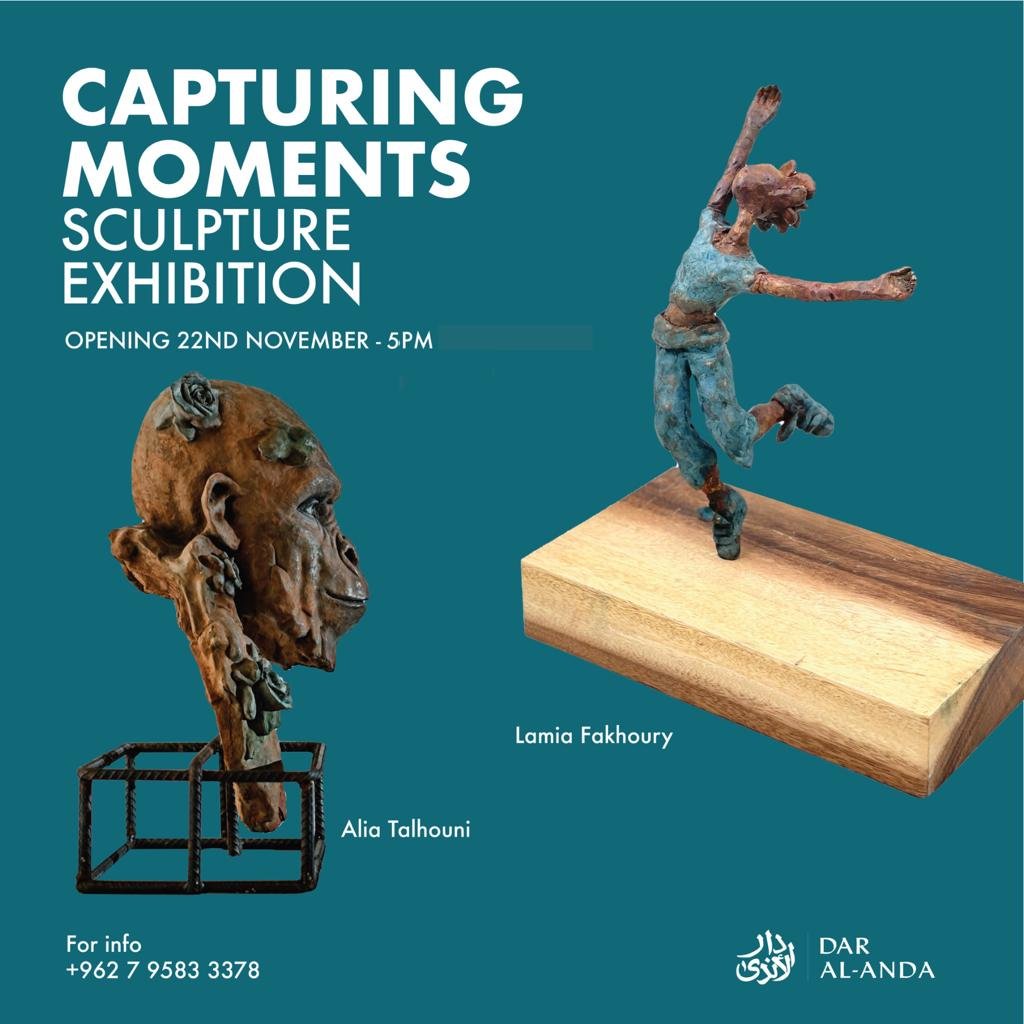
CAPTURING MOMENTS
A duo exhibition “CAPTURING MOMENTS” by Lamia Fakhoury & Alia Talhouni

Dancing Not Talking by Sattar Darwish
A solo exhibition “DANCING NOT TALKING” by Iraqi Artist Sattar Darwish

Bente Christensen-Ernst Solo Exhibition (Grubeh)
Grubeh
Bente’s 2nd solo exhibition in Amman, Jordan.


Ghadeer Saeed at Beirut Art Fair 2016






REVEALING GHADEER SAEED AT BEIRUT ART FAIR 2016
Booth C6 (Revealing by SGBL), 15-18 September, BIEL
Dar Al-Anda is bringing Jordanian artist Ghadeer Saeed into the spotlight with a new series entitled “The Levant” by partaking in the inaugural edition of Beirut Art Fair’s newest section, REVEALING by SGBL, which is dedicated to emerging artists of exceptional promise.
“As a Jordanian gallery participating in the first-ever edition of REVEALING by SGBL, it was vital for us to represent an artist that can speak to the historic and contemporary faces of Jordan, as well as the Levant region, which includes Jordan and Lebanon” says gallery Owner Majdoline Al-Ghezawi. Ghadeer was commissioned to create a new series consisting of three artworks specifically for Beirut Art Fair 2016.
The series is centered around The Levant’s people that currently live in an era where bloodshed and modern forms of self-expression, notably social media, are parts of everyday life. Ghadeer explains the inspiration behind these works: “The Levant is not defined by scriptures from the era of Saints. Nor is it characterized by relics from the days of Kings and Queens. The Levant is not determined by the stories and paintings weaved by Orientalists of the Harems that they frequented during the Caliphate’s reign. The Levant is neither a fez nor a necklace. To me, The Levant is simply a predicament. It is the result of the paradoxes and contradictions of a bloody human struggle up against the dreadful behavior of a modern man that is infected by "selfies" and social media. The Levant is at a disconnect from the rest of the world. For it is only in this region that constant bloodshed and self-obsession co-exist so shamelessly.”
About The Artist: Ghadeer was born in Libya to Jordanian parents. She holds a Bachelor of Science in Architecture. She has participated in several group exhibitions and has held two solo exhibitions to date, the second being Creative Chaos, which ran at Dar Al-Anda in 2012. Her work is emotionally, politically, and spiritually intense as she uses iconic images to explores themes of war, love, and chaos. Layered, monochromatic backgrounds give way to vivid waves of color that illuminate her foregrounds and reinforce their intensity.
About Dar Al-Anda: Founded in 1998, Dar Al-Anda is situated on the crest of Jabal Al-Lweibdeh, one of Old Amman’s seven hills and the country’s fine arts hub. Dar Al-Anda aims to enrich the lives of its patrons, employees and community by giving them the opportunity to experience art in all of its forms.
Series Manifesto by Ghadeer Saeed in Arabic & English on Following Pages
The Levant is not defined by scriptures from the era of Saints. Nor is it characterized by relics from the days of Kings and Queens. The Levant is not determined by the stories and paintings weaved by Orientalists of the Harems that they frequented during the Caliphate’s reign. The Levant is neither a fez nor a necklace. To me, The Levant is simply a predicament. It is the result of the paradoxes and contradictions of a bloody human struggle up against the dreadful behavior of a modern man that is infected by "selfies" and social media. The Levant is at a disconnect from the rest of the world. For it is only in this region that constant bloodshed and self-obsession co-exist so shamelessly.
In my new series, I have taken the headlines of this region as I observe and interpret them. These headlines serve as a comprehensive context for this series. Events such as war, terrorism, invasion, and oppression collude with modern forms of self-expression such as social media, and the selfie phenomenon in particular.
The name Bilad Al Sham is the Arabic term for The Levant. Bilad Al Sham transliterates into “the Land of Syria”. Although still in use, this name is no longer relevant. This name evokes unity, but the people of The Levant nowadays find themselves segregated by forces of division, sectarianism, fragmentation, racism, and tribalism. There is also the ongoing struggle to reclaim what has been stolen from one end and profaned on another end. In spite of all that, I know of no term other than Bilad Al Sham (The Levant) that collectively refers to this corner of the earth, even if that collectivism is purely superficial. This land became four lands known as Syria, Lebanon, Palestine, and Jordan when the Sykes-Picot agreement was ratified a century ago, and any sense of unity has since been fading. This region has for long existed, and continues to exist in a controversial realm.
At the core of this series lie two notions: self-expression, and the relationship with one's surroundings. Traditionally, an artist or writer expresses him or herself artistically or literarily for the satisfaction of having others examine or read his or her accomplishments. This is why I believe that the selfie is merely a materialization of human nature. The selfie is tied to innate, authentic human qualities, which at their best, constitute mankind's noble longing to communicate, to share, and to engage in dialogue. However, at their worst, they represent mankind's self-centered, selfish, and paranoid nature; one that leads him to seek out what makes him unique at any cost. When one's love of oneself turns into self-obsession and banality, his or her focus makes the inevitable shift toward favoring image over accomplishment.
On the surface, it may seem like war, bloodshed, and starving children embody phenomena that are far removed from that of the selfie. But I witness them all as symptoms of a common group of innate human qualities: self-love, the desire for visibility, and the need for conviction from others. In extreme cases, these qualities manifest as stealing someone else’s spotlight, recklessly striving for others' admiration and loyalty, stealing their money, declaring war upon them in order to claim what is theirs, or robbing them of of their personal freedoms.
Mine is only one of many interpretations, for reality is far more complex, deranged, chaotic, and illogical than a few words can express. From a technical standpoint, I exclusively chose panoramic dimensions for the artworks in this series. This decision was made to allow enough distance between my depictions of the paradoxes of our reality that are not bound by logic. Another technical note that I wish to highlight is that, for my primary subjects, I deliberately chose images of women that were portrayed by the Orientalists that frequented the Harems of the region during the Ottoman era. I did this because I found that the Orientalists’ interpretations of aloof women lying down nonchalantly evoke a hollow sensation that is similar to the one brought by the mechanical, self-obsessed behavior of modern human beings, particularly in regions drenched in tragedy.
A reflection in the mirror… a picture on a little blue screen, these mean a great deal to defeated souls. They allow them to live an illusory, parallel life… What is unsettling is that, in the eyes of these defeated souls, this illusion often trumps reality…
- Ghadeer Saeed
اظهار غدير سعيد في “بيروت آرت فير ٢٠١٦”
Booth C6 (Revealing by SGBL), 15-18 September, BIEL
" دار الاندى تقدم الفنانة الاردنيه غدير سعيد في مجموعتها الجديدة بعوان "بلاد الشام" من خلال المشاركه في النسخه السابعه من "بيروت ارت فير " في القسم الجديد Revealing by SGBL ،(“اظهار” في العربية) و المختص بالمواهب الصاعده المتميزه.
بالنسبه للجايري الأردني دار الاندى في مشاركته الأولى من قسم "اظهار" Revealing من بيروت ارت فير كان من المهم المشاركه من خلال فنان يعكس وجه الأردن القديم و الجديد و كذلك بلاد الشام و التي تشمل الأردن و سوريا و لبنان و فلسطين.
تقول السيده مجدولين الغزاوي صاحبه جاليري دار الاندى : طلبت من الفنانة غدير سعيد التحضير لبيروت ارت فير من خلال ثلاث اعمل فنيه تتناول المنطقه او "بلاد الشام"..
المجموعه ترتكز سكان المنطقه التي يطلق عليها بلاد الشام و التي تمر منذ فتره باوقات عصيبه الحروب و سفك الدماء و الفوضى مقترنه بالعصريه في جانب التعبير عن النفس و عن الذات من خلال وسائل التواصل الاجتماعي عشبكه النت..."
تشرح غدير انها استلهمت مجموعتها هذه من خلال اول فقرة من النص اللذي كتبته عن مجموعة “بلاد الشام”:
بلاد الشام ليست نصا من عصر القديسين....او اثار قديمه من عصر الملوك...او حتى قصص و رسومات مستشرقين من زمن الخلافه و الحرملك ...ليس طربوش او قلاده...بلاد الشام بالنسبه الى مجرد حاله تتكثف فيها مفارقات و تناقضات اوجه الصراع الانساني الدموي مع امراض و سلوكيات الانسان المعاصر المهووس بالسيلفي و بشبكات التواصل الاجتماعي...و لذلك تتقاطع ببلاد الشام مع غيرها من بقاع الارض...الفجائع الدمويه في حضره الهوس بالذات.
السيره الذاتيه لغدير سعيد:
غدير سعيد فنانة اردنيه تحمل درجه البكالوريوس في الهندسه المعماريه و شاركت في عده معارض جماعيه اضافه اللى معرضيين شخصيات الأول بعنوان “ما بين الحب و الحرب” و الأخير عام 2012 في دار الاندى بعنوان "الفوضى الخلاقه”.
تتناول اعمال الفنانة البعد الإنساني و السياسي و تعبر عن كلاهما بطريقه تتناول الجانب النفسي و العاطفي جماليا تعكس اعمالها طبقات من الأسود و الرمادي متباينه مع اضاءات مكثفه من الألوان الغنيه التي تضيء الخلفيات و تزيد من حساسيتها و حضورها.
عن دار الأندى: تأسس في عام ١٩٩٨ ، ويقع دار الأندى على قمة جبل اللويبدة، احد من تلال عمان القديمة السبعة واللتي تعتبر محور الفنون الجميلة في الاردن. هدف دار الأندى هو إثراء حياة رعاه وموظفيه والمجتمع من خلال منحهم الفرصة للتعرف على الفن بجميع أشكاله. بامكانكم زيارة daralanda.com للمزيد من المعلومات.
نص مجموعة “بلاد الشام” على الصفحة التالية
بلاد الشام ليست نصا من عصر القديسين....او اثار قديمه من عصر الملوك...او حتى قصص و رسومات مستشرقين من زمن الخلافه و الحرملك ...ليس طربوش او قلاده...بلاد الشام بالنسبه الى مجرد حاله تتكثف فيها مفارقات و تناقضات اوجه الصراع الانساني الدموي مع امراض و سلوكيات الانسان المعاصر المهووس بالسيلفي و بشبكات التواصل الاجتماعي...و لذلك تتقاطع ببلاد الشام مع غيرها من بقاع الارض...الفجائع الدمويه في حضره الهوس بالذات.
و في مجموعتي الفنيه الجديده اتناول العناوين الرئيسيه لهذه المنطقه كما ارها و احب ان اطرحها و هذه العناوين هي الخلفيه العامه و الشامله للاحداث التي تسيطر على المنطقه من حروب و ارهاب و احتلال و قمع و ما يوازيه من سلوك انساني عام يرتبط بالتعبير عن النفس من خلال وسائل التعبير الحديثة و شبكات التواصل الاجتماعي و تحديدا ظاهره السلفي..
ومع ان تسميه "بلاد الشام" لا تنتمي لهذا العصر و لا تعني وحده المكان و السكان من خلال التجاور الجغرافي امام كل التقسيمات و الطائفيه و التفتيت و العنصريه و العشائريه و امام ما هو مسلوب من هنا و منتهك من هناك ، الا انني لا اعرف تسميه بديله تجمع ولو صوريا بلاد ما اصبح بعد مئه عام من سايكسبيكو دول باسماء سوريا و لبنان و فلسطين و الاردن ، و هي منطقه ساخنه على الدوام بحيث تحتل العناوين الاخباريه و كما كانت منذ زمن طويل....
التعبير الانساني عن الذات و الانشغال به في علاقته بالمكان و الاحداث خارجه هو لب فكره هذه المجموعه من اللوحات الفنيه ، يعبر الانسان عن ذاته فنيا و ادبيا لكي يرى أو يقرأ الاخرين منجزه... ، و من هنا اعتقد ان فكره السيلفي هي فكره سحيقه بقدم الكائن البشري...اذ ترتبط بصفات بشريه فطريه اصيله فيه ، لا يقتصر الموضوع بصفه النبل بتوق الكائن البشري التواصل مع الآخر و المشاركه او الحوار....بل ايضا يتمحور حول ذاته و انانيته و وعيه بنفسه في محاوله لأيجاد ما يميزه عن الاخر ، و أن تحول حبه للذات الى الهوس و التسطيح في العصر الحديث ، اذا زاد تركيزه بشكل مضطرد على صورته بدلا من انجازاته...
قد يبدو ان شن حرب و اهدار دماء الاخرين و افجاع اطفال هي فكره بعيده عن السيلفي....لكن اراها تنطلق من نفس الصفات الفطريه الانسانيه....حب الذات ، حب اظهار الذات للاخرين...فرض ارادة الذات على الاخرين....امتدادا الى محاوله سرقه الاضواء و الاهتمام منهم و نيل اعجابهم او ولائهم....او سرقه اموالهم او شن حرب عليهم لسلبهم ما يملكون ، أو لفرض السيطره على حياتهم او معتقدهم .
هذه فقط احدى اوجه التحليل و بالطبع المشهد معقد اكثر من ذلك بكثير و متداخل بشكل جنوني و فوضوي و غالبا غير منطقي ...و لذلك من ناحيه فنيه تقنيه تعمدت استعمال الابعاد العريضة البانوراميه للوحات لاتاحه المساحه للجمع بين بعض من تناقضات الواقع التي لا يربطها منطق...و اضيف ايضا انني استخدمت شخوصا من رسومات بعض المسشرقين الذين تناولو المنطقه في ايام ما يسمى الحرملك في عصر الخلافه العثمانيه ، رأيت ان هذا الاحساس الذي تتركه تعابير و ايماءات هؤلاء النسوه المستلقيات بلا مبالاه و بدلال بمعزل عما يحدث خارج الجدران يشبه الى حد كبير في بلادته و هوسه بالذات و بالجسد سلوك الانسان المعاصر ، خصوصا في المناطق التي تزخر بالفجائع....
صوره في المرآة...صوره على شاشه صغيره زرقاء ، تعني لكثير من الذوات المهزومه حياه اخرى موازيه... بل قد يعني لهم هذا الوهم الحياه بحرفيتها و معناها…
- غدير سعيد






